The mythical creatures in Thailand

The legendary forest of Himmapan
Mythical creatures such as the Sphinx (Egyptian mythology), the Cerberus (Greek mythology), the Yeti (Nepalese mythology) are world famous. In Thailand, there are also many fascinating and intriguing ones.
These mythical creatures live in the legendary Himmapan forest (Thai: ป่าหิมพานต์). This forest is said to be located in the Himalayan Mountains. In the past, the Himalayas were considered the center of the universe. Legend has it that this forest is invisible to mortals, who can never approach or enter it. It is said to be located under the Buddhist heavens. The Himmapan forest is home to many mythical creatures who are generally endowed with magical and supernatural powers. The most surprising and mysterious are those that combine several different animal forms.
They are often represented in many Thai architectures, especially in temples and many buildings of the royal institution. This is a mark of religious belief and sovereignty. These creatures highlight the cultural patterns that are indicative of a multitude of ancestral roots: Buddhist legends, Brahmanism, folklores, and also influences from Chinese and Western arts. This reveals the innovative thinking of the Thai people and their cultural openness to others.
Ghilen
Of Chinese influence, the Ghilen is a monster that would have the head of a dragon with a single antler, the body of a deer covered with scales, an ox tail and horse hooves. The males were known as “Ghi” and the females as “Len”, hence the unique name of “Ghilen”. The creature is a combination of the five primary elements: earth, water, fire, wood and metal. Thai artistic representations of the Ghilen date back to the time of King Rama III. They can be found in several forms. In the Himmpan universe, one will generally find a Ghilen represented under one of the three following forms: the Chinese Ghilen, the Thai Ghilen and the Winged Ghilen.
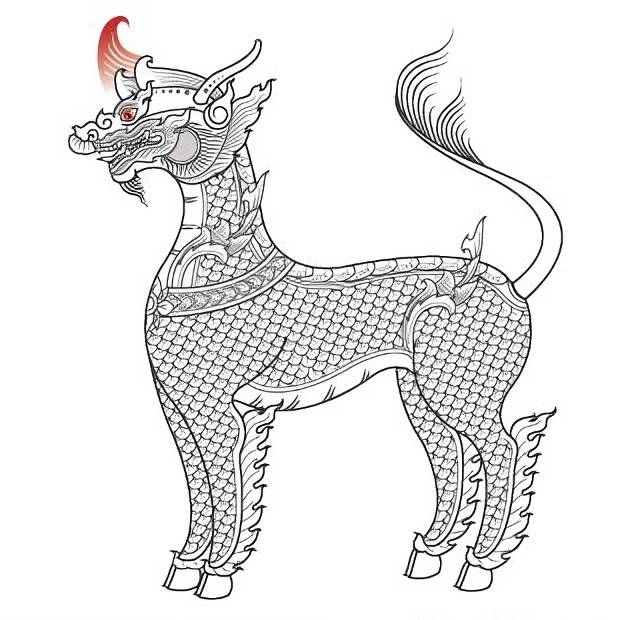
Chinese Ghilen. According to Chinese legend, the creature has the head of a dragon with a single antler, the body of a deer covered with scales, an ox tail and horse hooves. Some say that a Ghilen can live up to several thousand years.
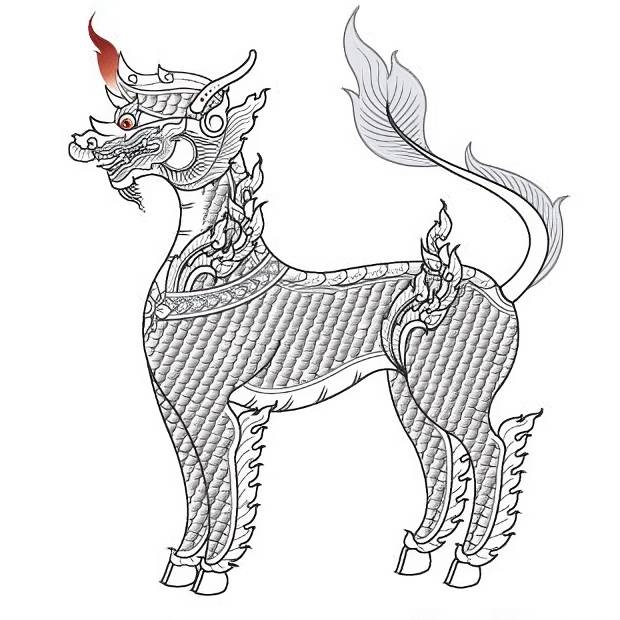
Thai Ghilen. Many Thai temples and buildings are decorated with this creature. In fact, the Thai version is a bit different from its original Chinese counterpart. Equipped with two antlers as standard, the Thai Ghilen also has different looking hooves.
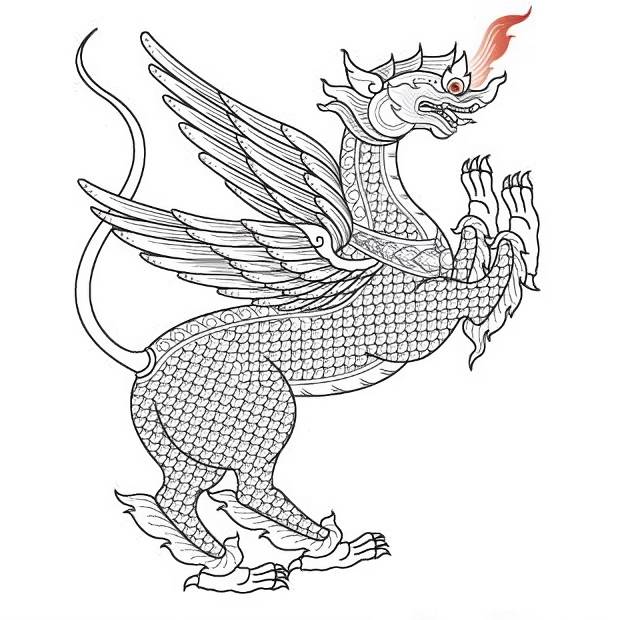
Winged Ghilen. Also called Ghilen Peek, it is a strange looking animal. Its physical characteristics are totally different from the other two types of Ghilen. Without antlers, the winged Ghilen has a pair of wings and feet with clawed feet.
Deer
Deer are very numerous animals in the western forests. Thanks to the imagination and creativity of artists, deer creatures have become the most fascinating and unusual animals living in the Himmapan lands.
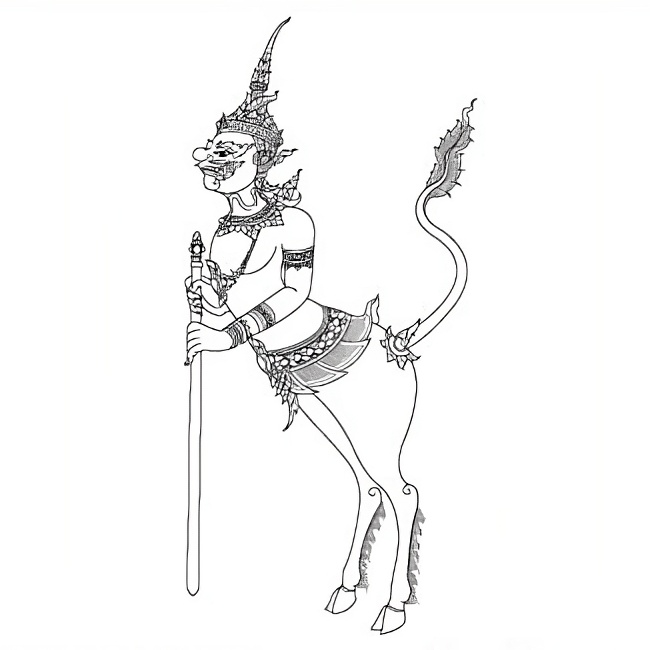
Mareet. Mareet is a giant in the Ramayana tale. He is the son of Khaknasoon (also a giant) and a relative of Tossakan, the main villain of the story. Tossakan wanted to capture Lady Sita (Sida) and therefore ordered Mareet to turn himself into bait (golden deer). This is why Mareet is represented as a half-giant, half-deer creature.
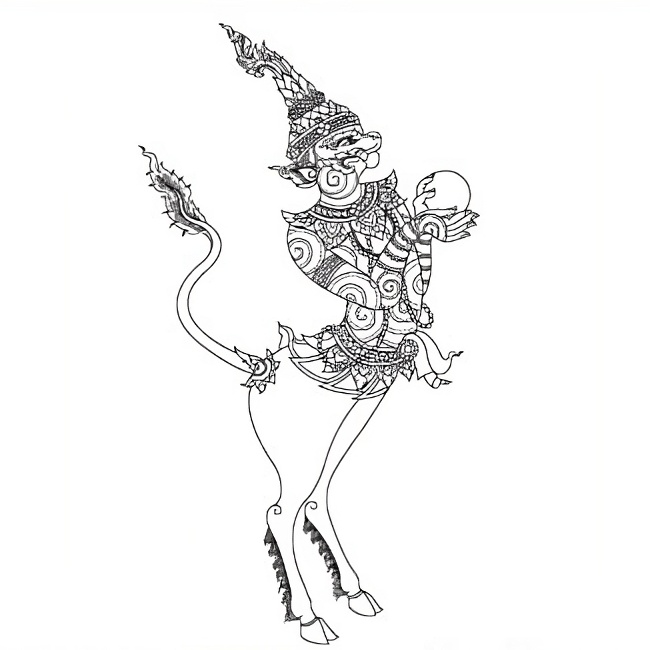
Panorn Maruek. With an upper body like an ape and a lower body like a deer, this creature has the agility of a deer-like animal, and uses its hands to grasp objects. Panorn Marueks also have an exceptional sense of hearing, a trait inherited from the apes. Panorn Marueks prefer fruits such as bananas and coconuts. Their bodies are usually greenish.
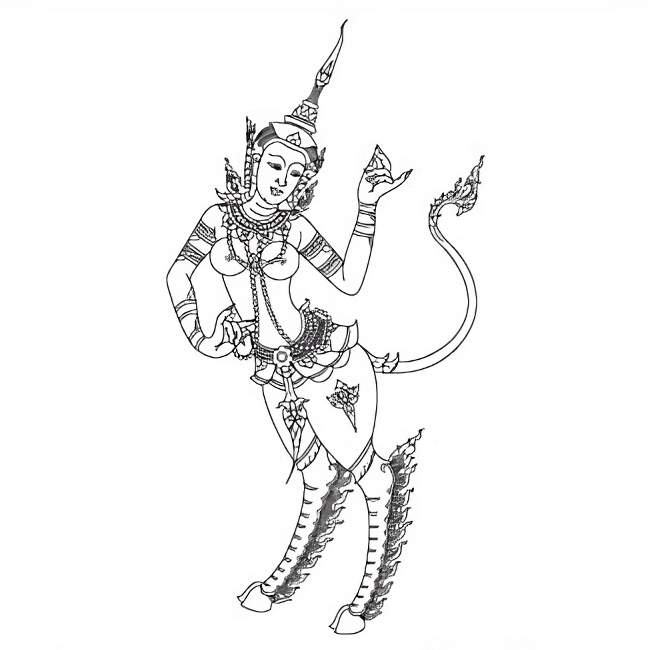
Upsorn Sriha. The Upsorn Srihas are half-human, half-herd creatures. They are abundant in the Himmapan forest. Sometimes the creatures are depicted as humans with the lower body of a lion.
Lion
Lions are probably the most abundant creatures in the Himmapan Forest, divided into two categories: pure lions and mixed lions. Pure lions are not a mixture with other animals. There are four of them: Buntu Rajasri, Kala Sriha, Kraisorn Rajasri and Tinna Sriha. Mixed lions are the result of mixing various types of animals with the lion. In general, a mixed lion has the body of a lion with added physical characteristics from other types of animals.
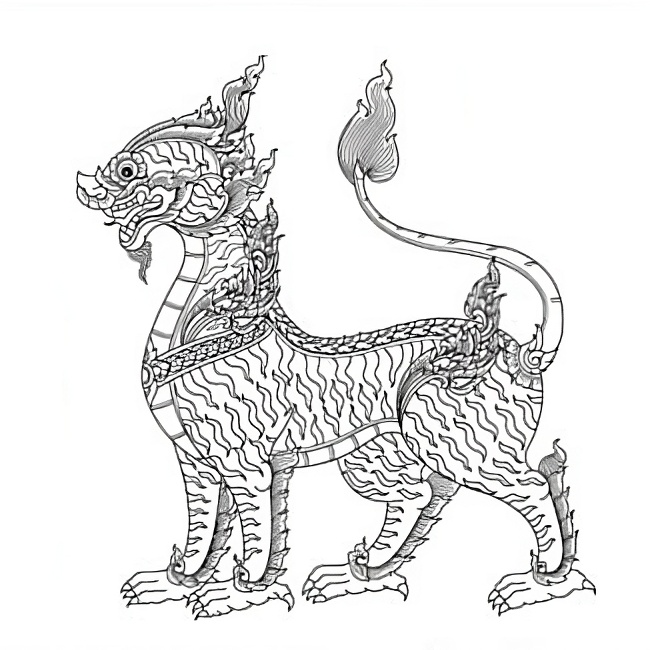
Buntu Rajasri. (Thai: บัณฑุราชสีห์). Also called Buntu Sura Mareu Kin, they are large carnivores that prefer large animals like deer, buffalo, elephants and sometimes even humans. In the old history book about the Himapan forest, the Buntu Rajasri is described as a large lion whose body is as big as a bovine.
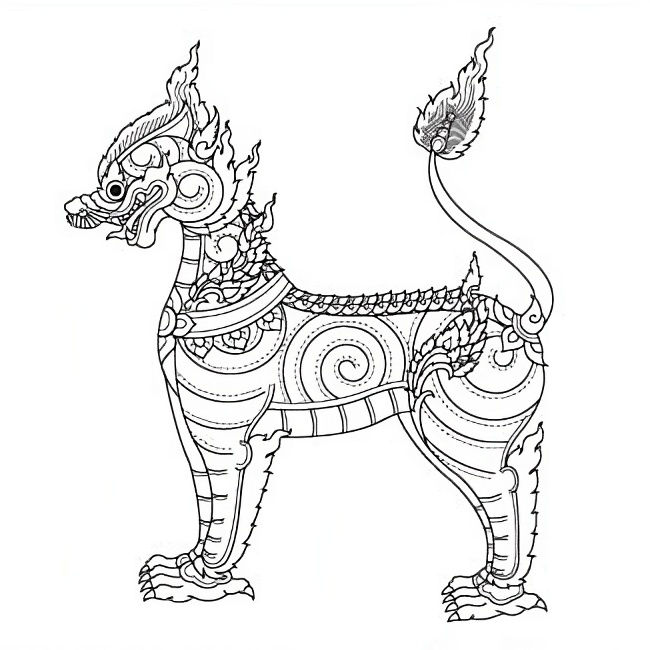
Kala Sriha. (Thai: กาฬสีหะ). Kala Sriha has the particularity of being herbivorous. With a body the size of a bovine, it is covered with a black fur (the word “Kala” means black). If the Kala Sriha do not eat meat, it does not mean that they are not dangerous. A Kala Sriha has a body as strong as a lion’s and is able to roar loudly.
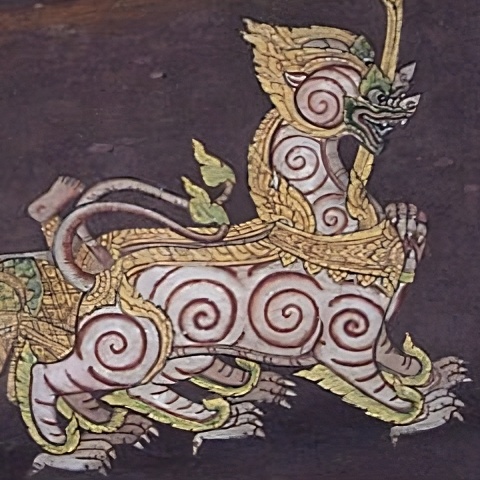
Kraisorn Rajasri. (Thai: ไกรสรราชสีห์). It is a powerful and graceful lion. It has a red mane, red lips, red tail tip and red paws. The Kraisorn Rajasri is a solitary animal, capable of communicating with other animals through a variety of sounds, including roars and growls. It feeds mainly on large animals.
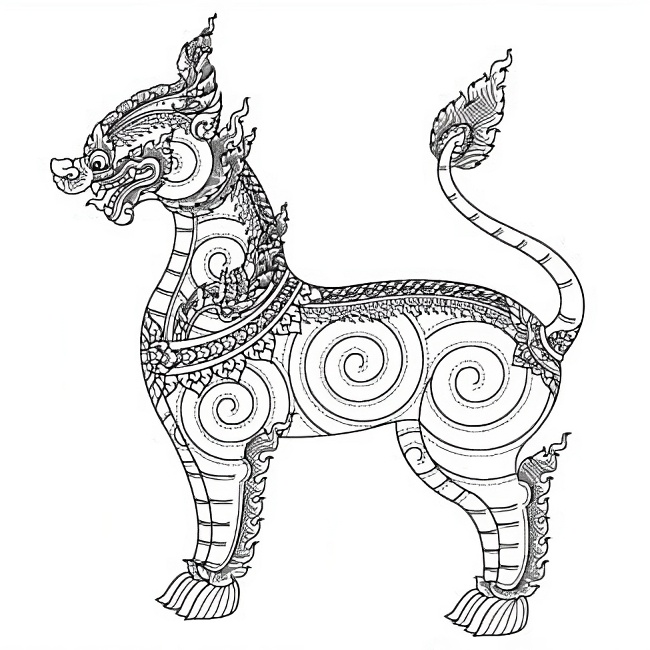
Tinna Sriha. (Thai: ติณสีหะ). Tinna Sriha has a red body and hooves like those of horses. Tinna Sriha is a herbivore.
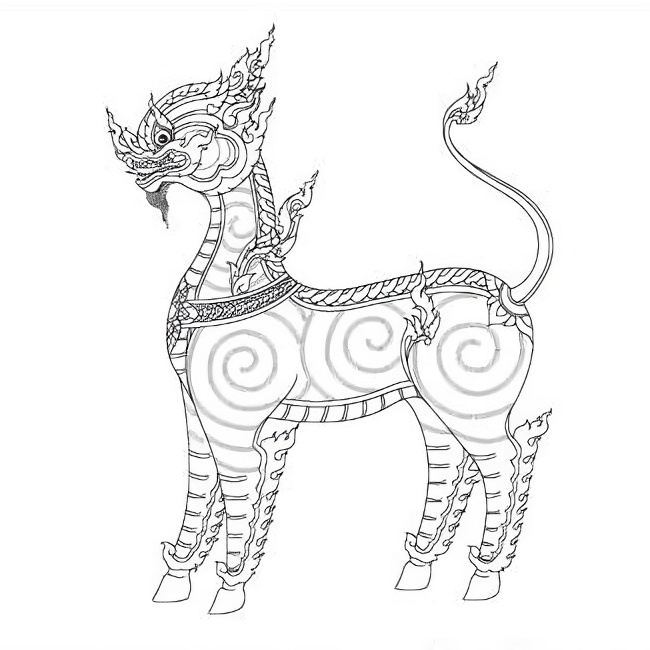
Gaysorn Singha. Gaysorn Singha (also called Garsorn Singha) is a mixed lion that combines the characteristics of an ox. It has the body of a lion and the legs of an ox with hooves.
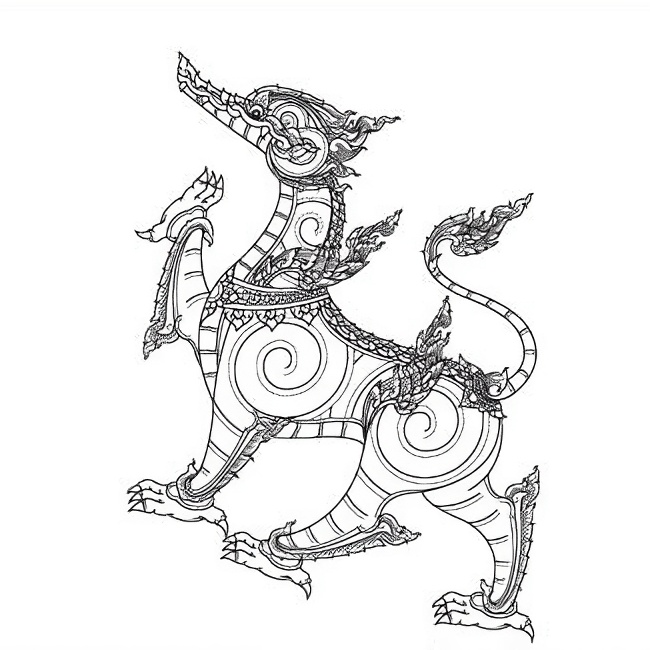
Hemaraj. Hemaraj is a mixed lion between a Hem and a Lion. The word “Hemaraj” is a combination of “Hem” and “Raja”. It is difficult to describe what a “Hem” is. Some say that the Hem looks like a Hong (swan), but in some representations, the head of a Hem looks more like a Crocodile.
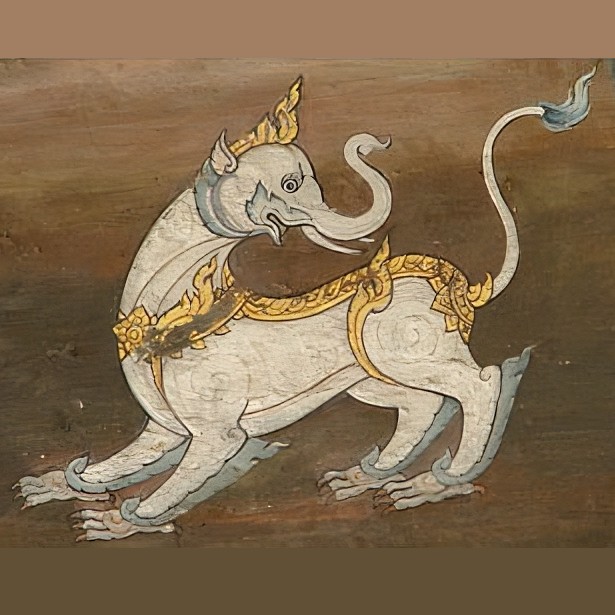
Kochasri. The Kochasri is a mixed lion with a head similar to that of an elephant. Legend has it that this animal is extremely strong, as both the elephant and the lion are powerful creatures. Another similar creature with a physical appearance almost identical to Kochasri is Tukka Tor.
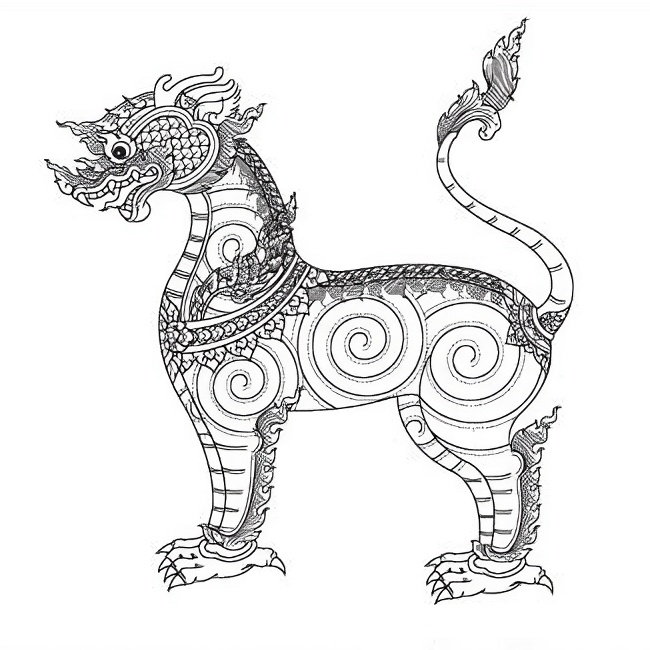
Kraisorn Jumlang. Kraisorn Jumlang has the head of a dragon and the body of a Singh (lion). Some artists prefer to call this creature “Kraisorn Mungkorn”, which literally means “dragon-lion”.
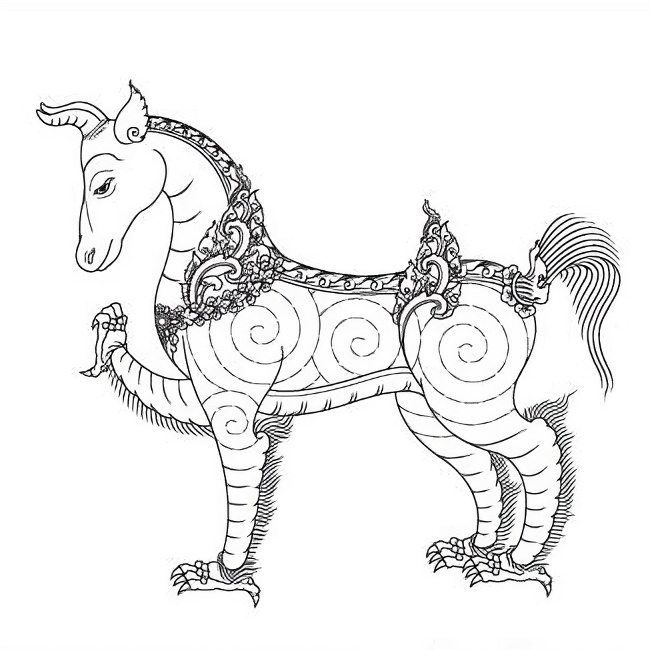
Kraisorn Karwee. This animal is a combination of a lion and a cow. In general, the Kraisorn Karwee has the head of a cow and the body of a lion. In some artists’ representations, the Kraisorn Karwee is depicted as a one-horned cow with the body of a lion and the tail of a horse.
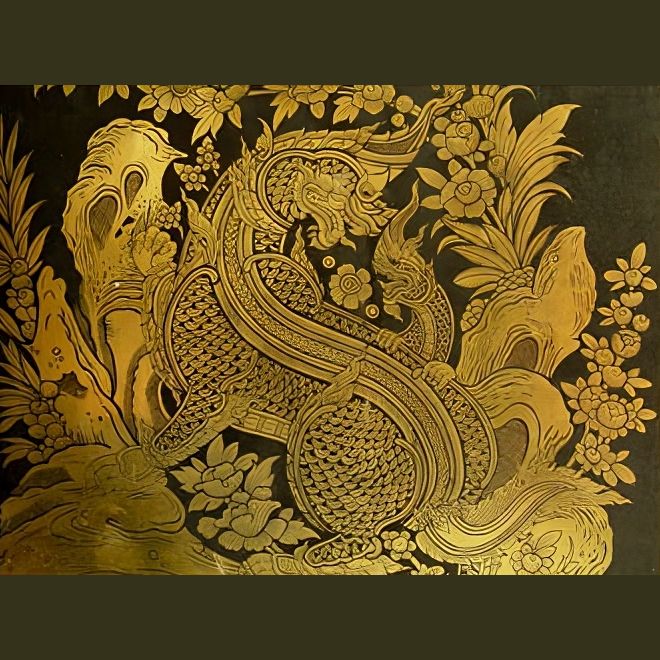
Kraisorn Naga. Kraisorn Naga is a mixed lion with Naga characteristics. With the head and tail of a Naga, Kraisorn Naga has the body of a lion and is completely covered with scales.
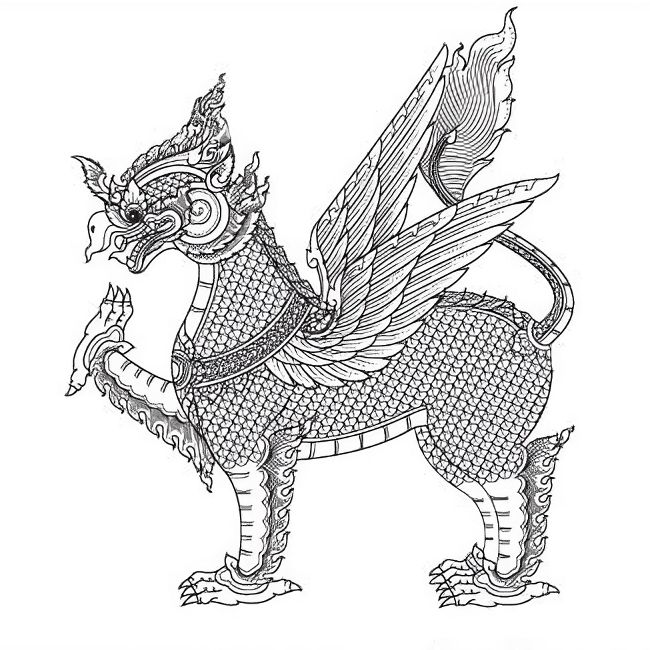
Kraisorn Puksa. Kraisorn Puksa is a mix between a lion and a bird. Light green in color, this creature has the body of a lion with the head and wings of a bird. It has a scaly skin.
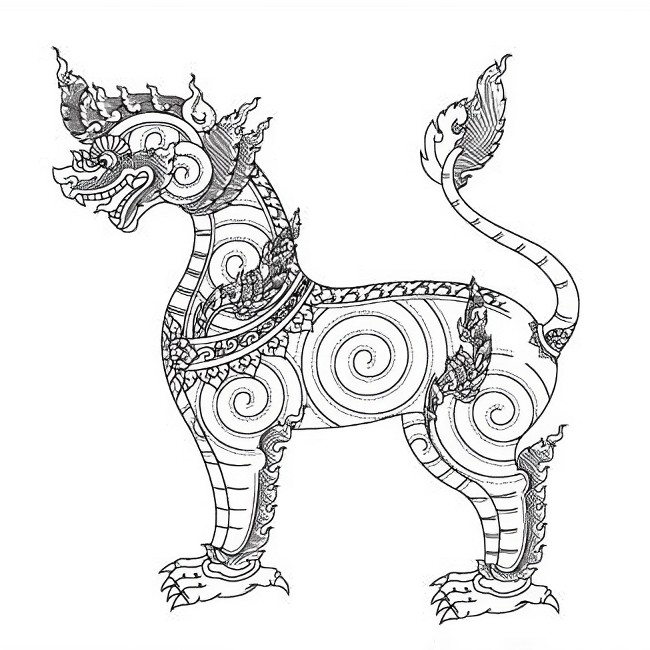
Loto. This brown creature has clawed feet. The rest of the body resembles other lion-based creatures. The origin of its name is rather uncertain. In Chinese, however, the word “Loto” means “camel”.
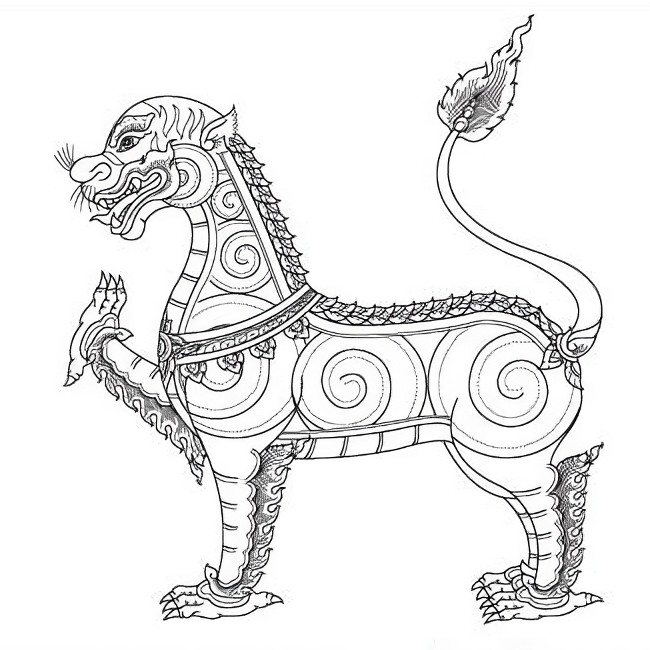
Payak Kraisorn. Payak Kraisorn is a mixture of tiger and lion. Its head resembles that of a Bengal tiger while its body is that of a lion. Some Payak Kraisorns are seen in the real world and are called “Liger” (descendants of a male lion and a female tiger) or “Tigon” (descendants of a male tiger and a female lion).
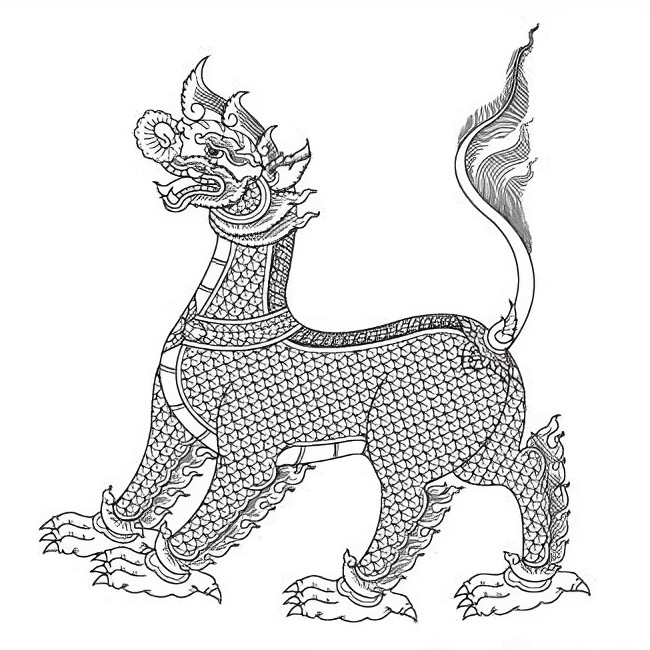
Sang Prang. Sang Prang is predominantly yellow in color and has clawed feet. However, this creature remains a mystery. In ancient literature, the word “Sang” can mean many things. It can mean a tiger or even an elephant.
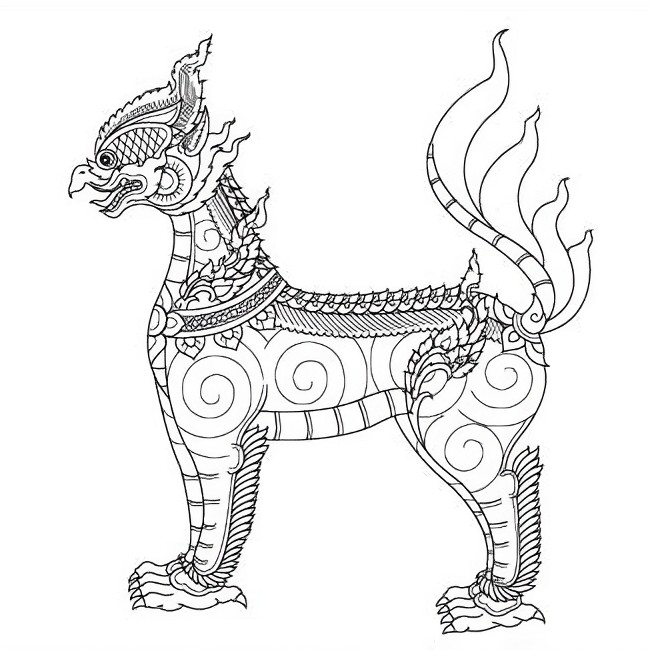
Sagoon Kraisorn. Sagoon Kraisorn is a mix between a lion and a bird head. Another creature of the same type is the Kraisorn Puksa. The main difference is that the Sagoon Kraisorn does not have wings like the Kraisorn Puksa.
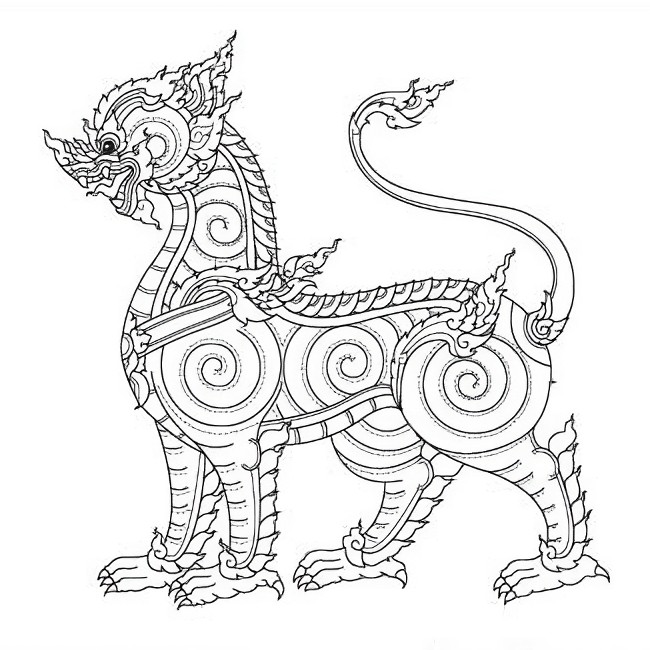
Sinkh. Sinkh has the particularity of being light purple in color. However, he has similar characteristics to other normal lions.
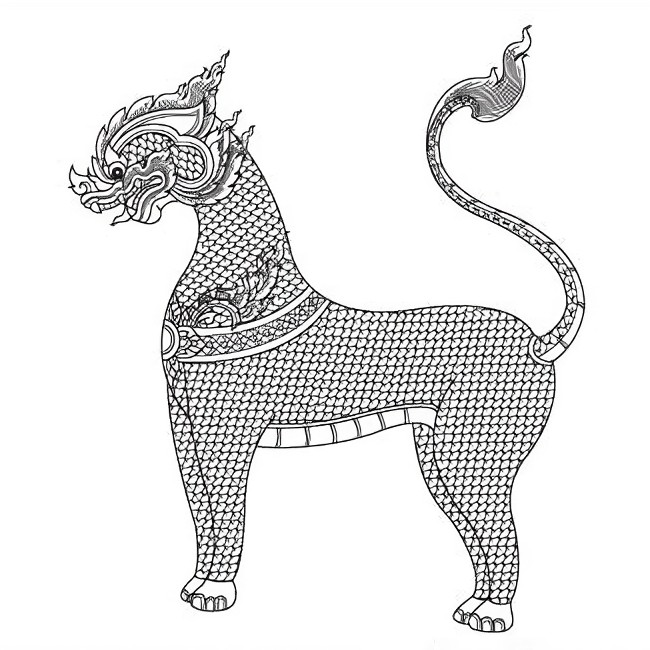
Singha Khak Kar. Singha Khak Kar (also called Sreeha Khak Kar) has a scaly body. The body color is dark purple. Its legs are similar to those of the elephant.
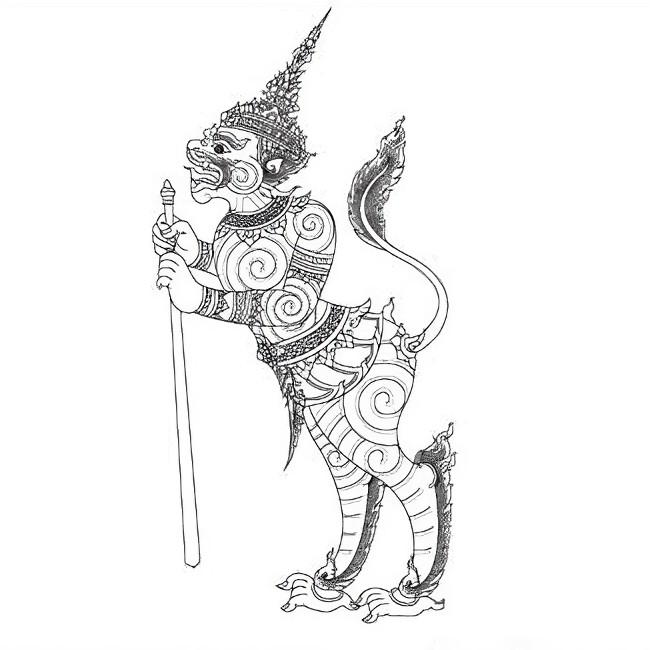
Singha Panorn. With his red fur, Singha Panorn has the characteristics of a monkey and the lower body of a lion. His feet, however, are like those of a monkey.
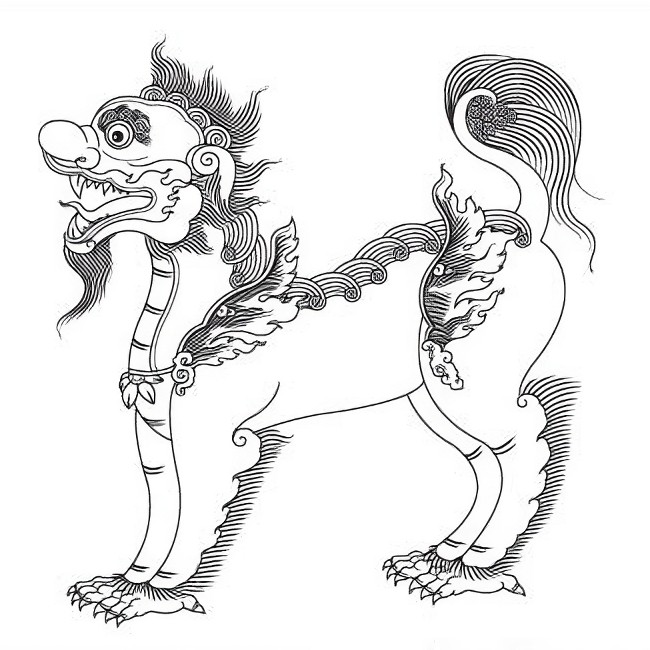
Singto Jean. Singto Jean (also known as Chinese Lion) is a Chinese storytelling creature. It has a bit more fur than other lion-based creatures. There are many representations of Singto Jean in Thailand, especially in Thai temples built during the reign of King Rama III, because at that time the trade between Thailand and China was intense.
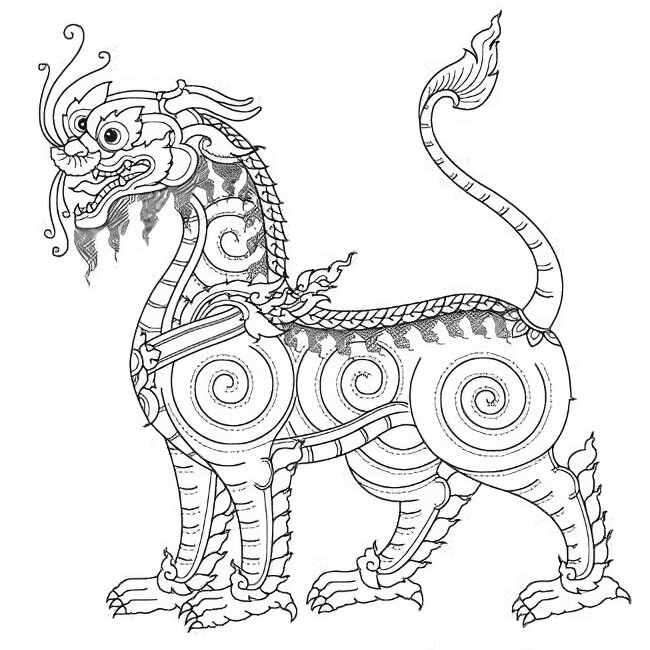
Srihara Mungkorn. This mixed creature has the head of a dragon and the body of a dark brown lion. The creature is often mistaken for a Kraisorn Jumlang.
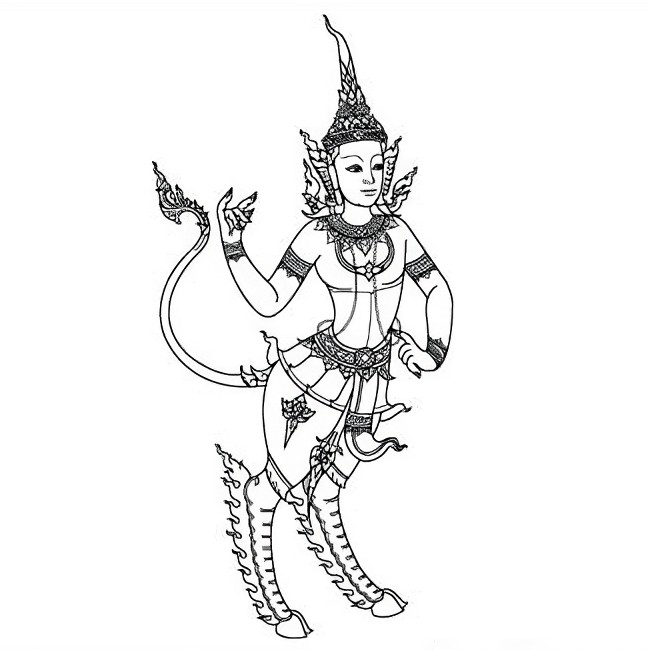
Thep Norasri. Thep Norasri is a mixed lion that has the upper body of a man. Sometimes it has the lower body of a lion, and in some cases it has the appearance of a deer. Females are sometimes called “Upsorn Srihas”.
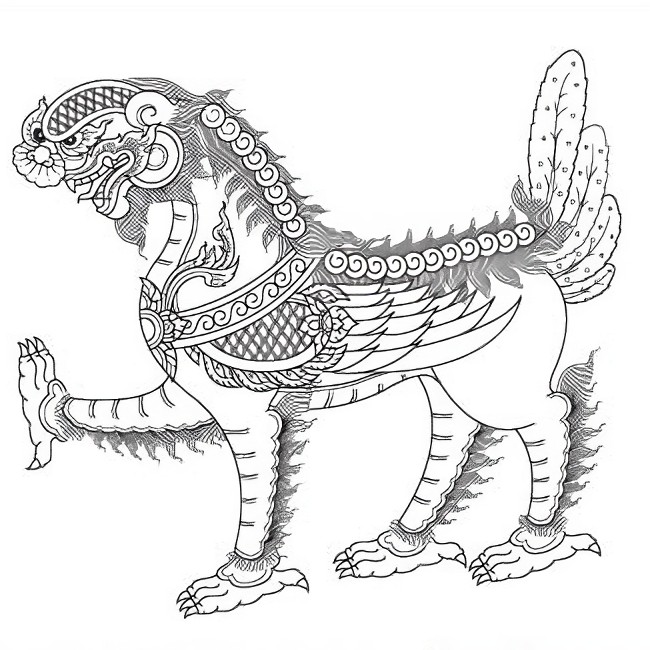
Tichakorn Jatubod. The Tichakorn Jatubod is a four-legged bird-like creature. Old legends describe the creature as a lion-like animal with wings and a bird-like tail. Its skin is light green in color except for its tail which is yellow in color.
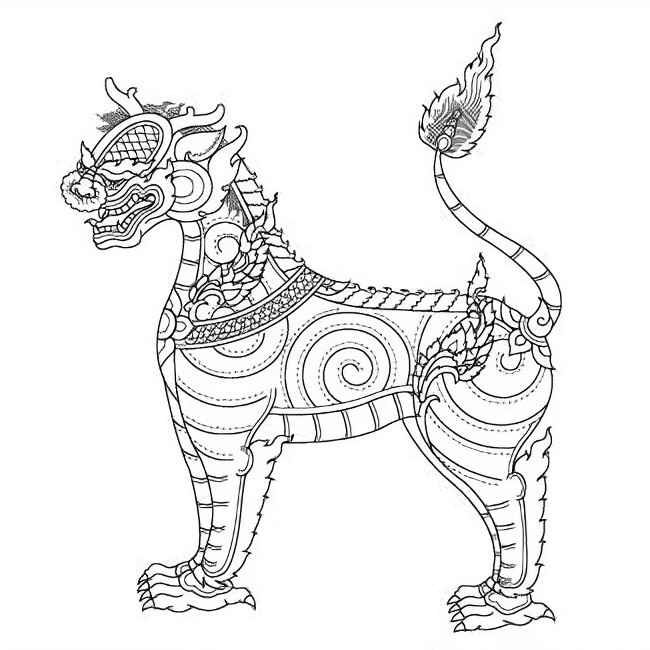
To. To is a lion-like creature with two horns above its head. The name “to” derives from the name of a Laotian mythical creature.
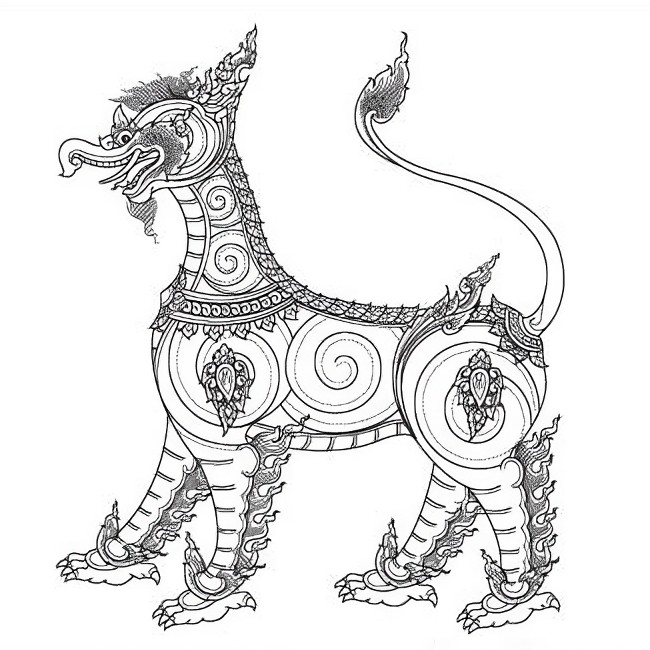
Tukka Tor. Tukkar Tor is a mixed creature with the lower body of a lion and the head of an elephant. This creature is often confused with the Kochasri. However, the Tukka Tor has a beard and its hair is combed forward.
Other variants also include To Thep Singha Nat which is a lion-like creature with a brown body. Its name is a combination of the word “To” and the word “Singha Nat”. Both animals are also lion-like creatures.
Horse
Horses are very important animals. They have been domesticated since ancient times. There are many artistic representations of this creature in many cultures. Horses also make an appearance in the world of Himmapan. Most of the horse-based creatures in Himmapam legends have a horse body with mixtures of other animals.
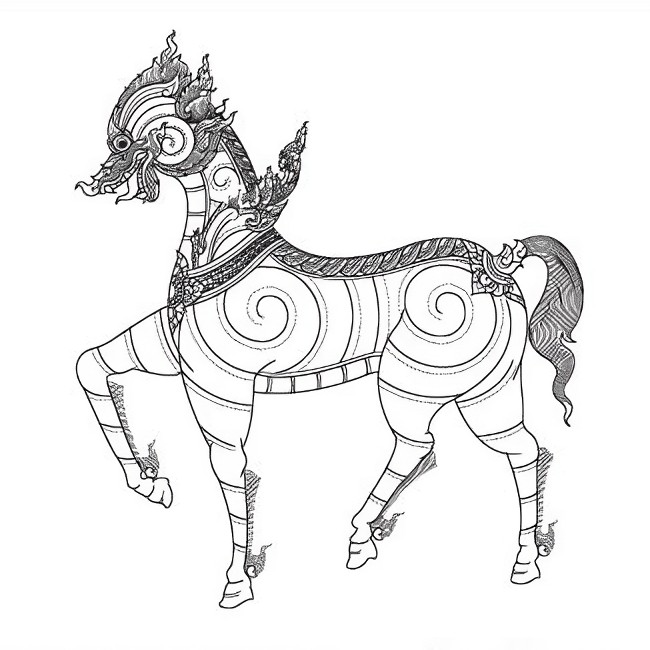
Durong Kraisorn. (Thai: ดุรงค์ไกรสร). The Durong Kraisorn is a hybrid creature between a lion and a horse. According to the legend, the animal has a horse’s body with reddish skin, a black tail, black horse-like hooves and a graceful lion’s head. They are carnivorous and feed on various inhabitants of the Himmapan forest, such as small animals (rabbits and monkeys) and large animals (pigs, deer and cattle).
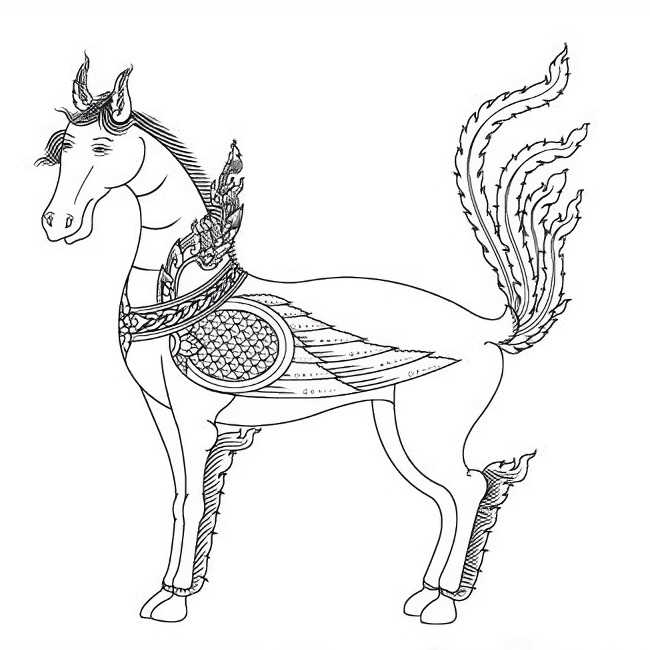
Durong Puksin. (Thai: ดุรงค์ปักษิณ). The name Durong Puksin is a combination of two words: Durong (one of the four types of horses) and Puksin (bird). They are herbivorous and peaceful animals. They are often confused with the Ma Peeks, which has the tail of an ordinary horse. These two creatures have the particularity of being very similar to Pegasus, a Greek monster.
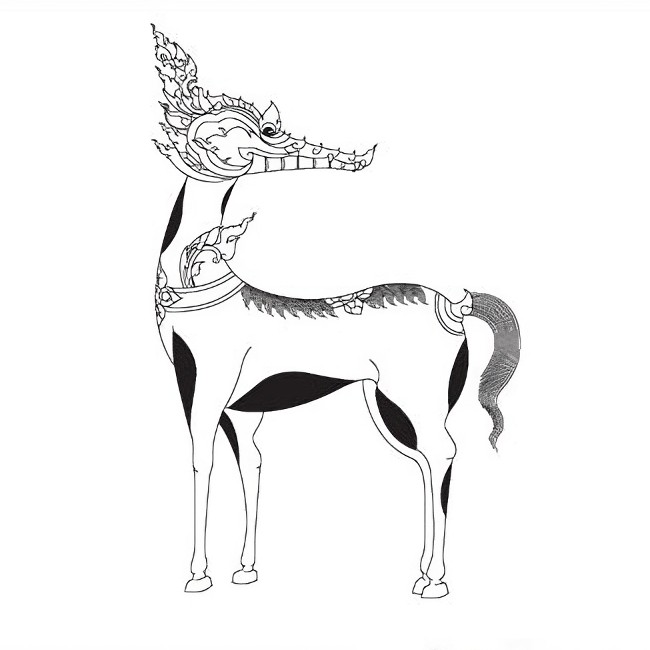
Hemara Ussadorn. (Thai: เหมราอัศดร). It has a bird’s head and a horse’s body. “Hemara” means Hongsa which is a type of bird, and “Ussa Dorn” means horse. According to legend, the body of a Hemara Ussa Dorn is covered with black fur with a white horse tail. They are omnivorous and their diet includes grass, insects and small fish.
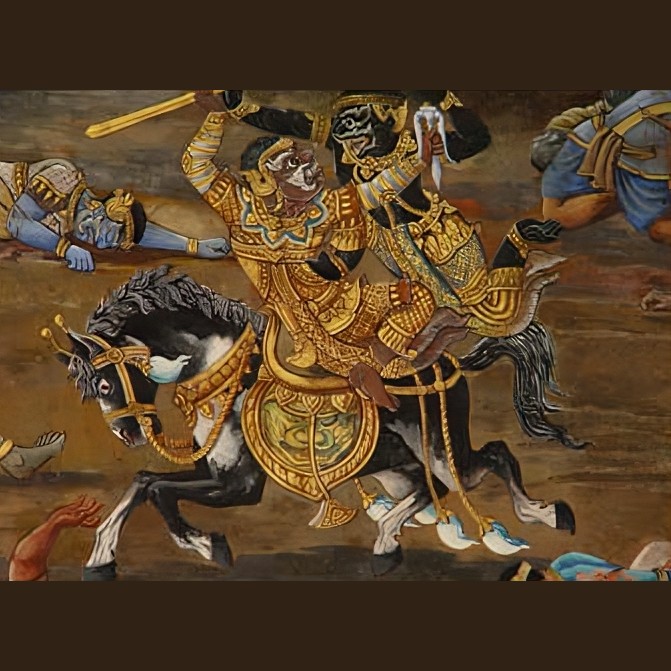
Ma. In Hindu legend, the God of Wind created 4 breeds of horses: Vlahok, Archanai, Sintop Mano Mai and Ussadorn. Originally, all 4 were able to fly. One day, the 4 horses entered the garden of Lord Shiva. The guardian of the sky saw them and caught them. Lord Shiva punished the 4 horses by cutting off the parts that allowed the 4 horses to fly freely. After that, the god sent 4 horses to earth and ordered them to be vehicles for humans forever.
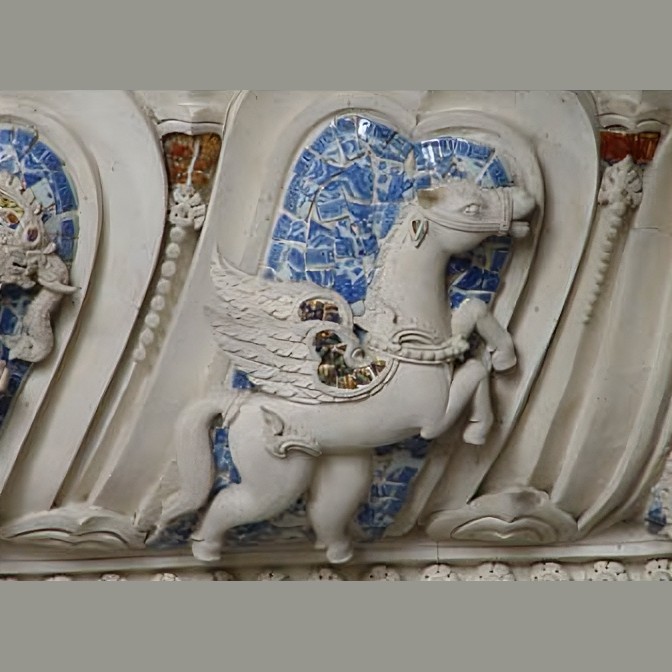
Ma Peek. Ma Peeks (winged horses) also appear in Greek mythology (Pegasus) or in old Chinese tales. They have wings similar to those of a bird and are able to fly at very high speed. They are mixtures between birds and horses.
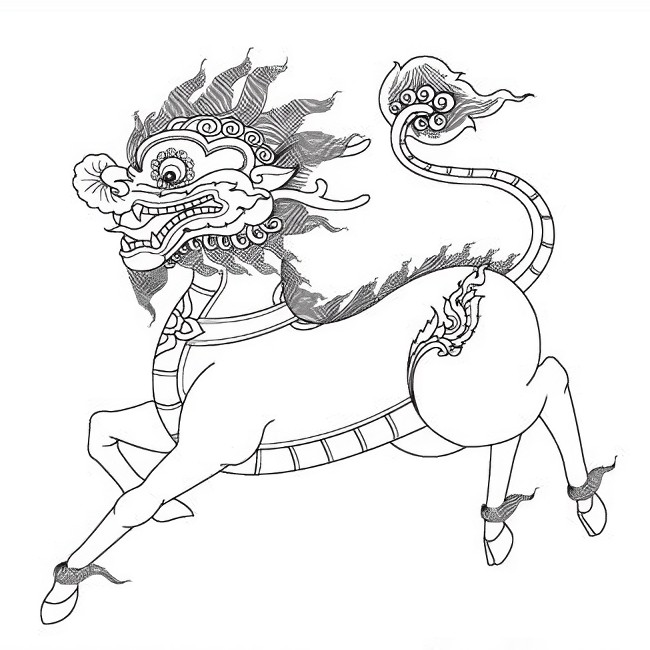
Ng-eye Sai. He would have the head of a lion and two horns growing on the forehead. Others think that he has the head of a Ghilen (Kirin). It has the body of a horse and is blue in color. It is carnivorous and usually hunts small and large animals, including humans.
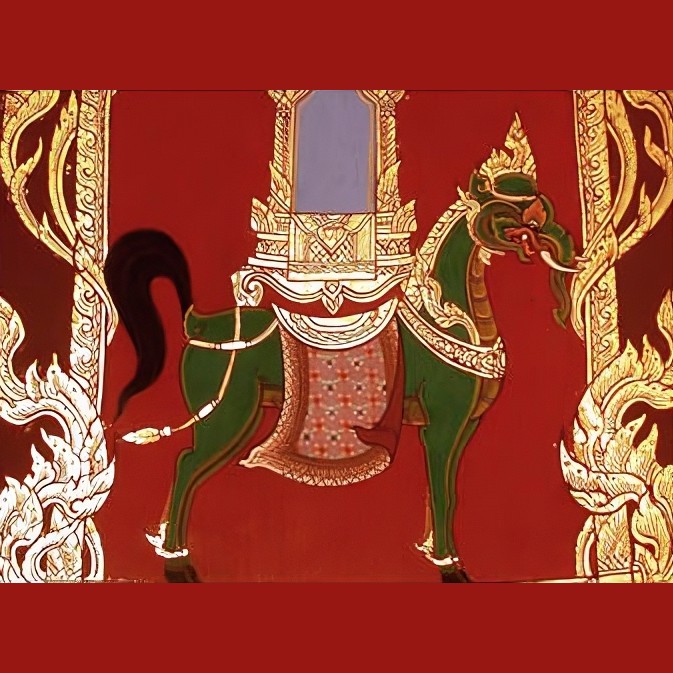
Sinta Pakunchorn. Sinta Pakunchorn is a green creature, mixing a horse and an elephant head. In some descriptions, she also has black hooves.
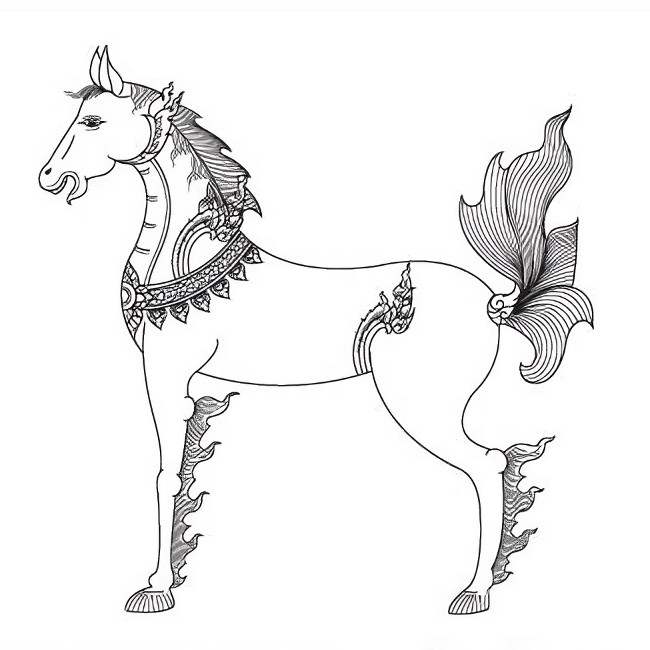
Sinta Pa Nattee. The Sinta Panattees are inhabitants of rivers and freshwater lakes. They are very strong and have magical powers. They can walk on the surface of the river by jumping on lotuses. In addition, the word “Sintu” is also the name of an ancient Indian city, very famous for its horses. This creature has a lean horse body with blood red fins and a fish tail.
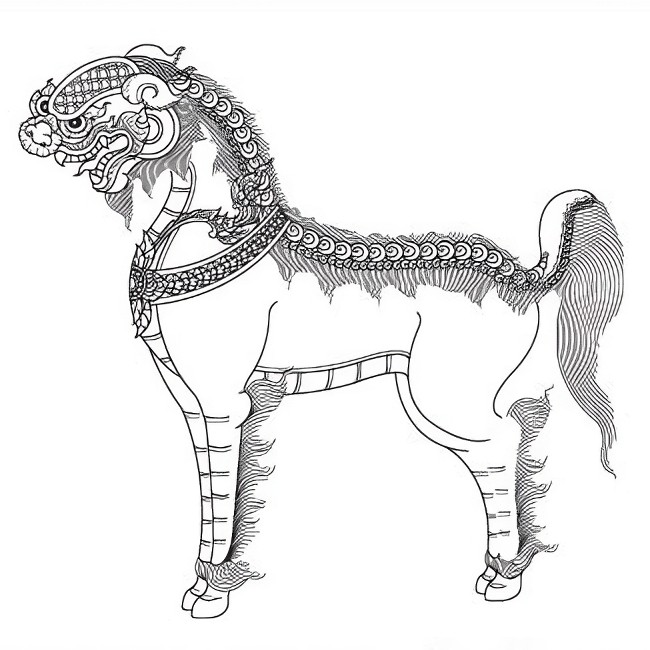
To Thep Ussadorn. To Thep Ussadorn is a mix between a lion and a horse. It has an orange coat, a green mane, red hooves and a red tail. It is a carnivorous animal that preys on small and large inhabitants of the Himmapan forest.
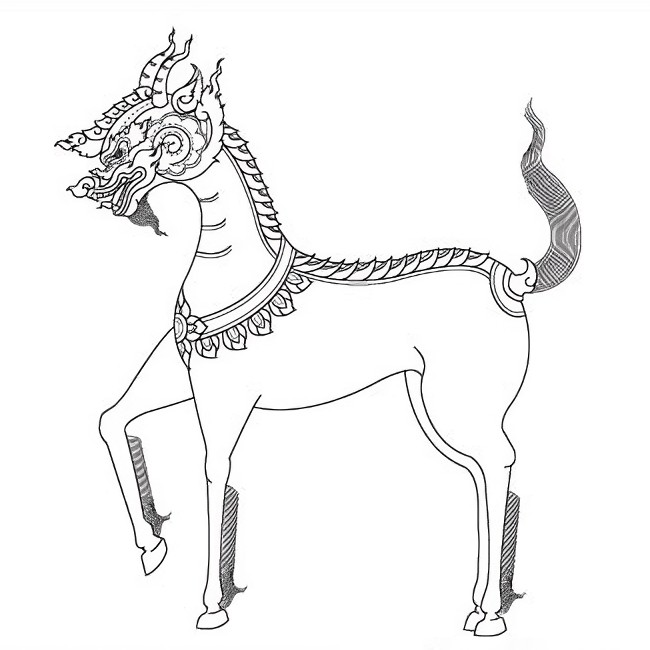
Ussadorn Hayra. The Ussadorn Hayra is a creature half horse half Hayra. Its body is of light purple color. The “Hayra” creature is sometimes represented as a crocodile. In some cases, the creature looks more like a dragon.
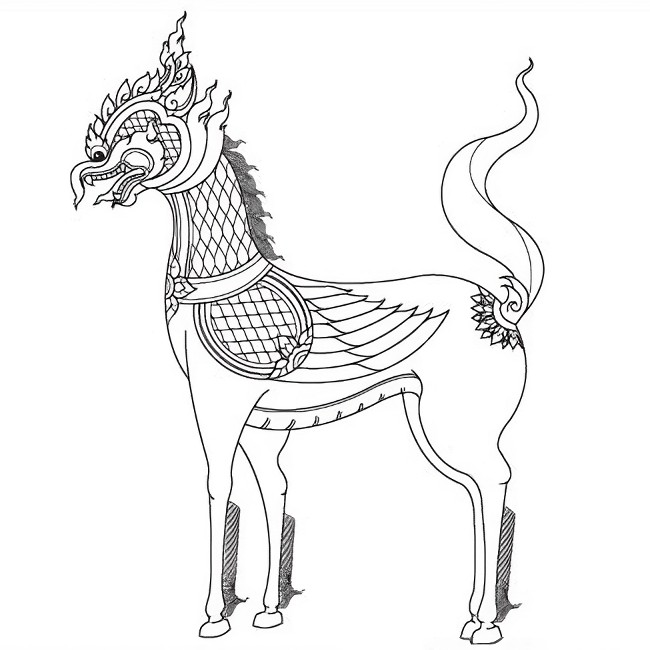
Ussadorn Vihok. Ussa Don Vihok is a mixture between a horse and a bird. The creature has the head and wings of a bird. Its body, similar to that of a horse, is covered with yellow fur. The hooves and tail appear to be black. It is able to fly at high speed and is omnivorous. It feeds mainly on insects, reptiles, small animals and plant seeds.
Rhinoceros
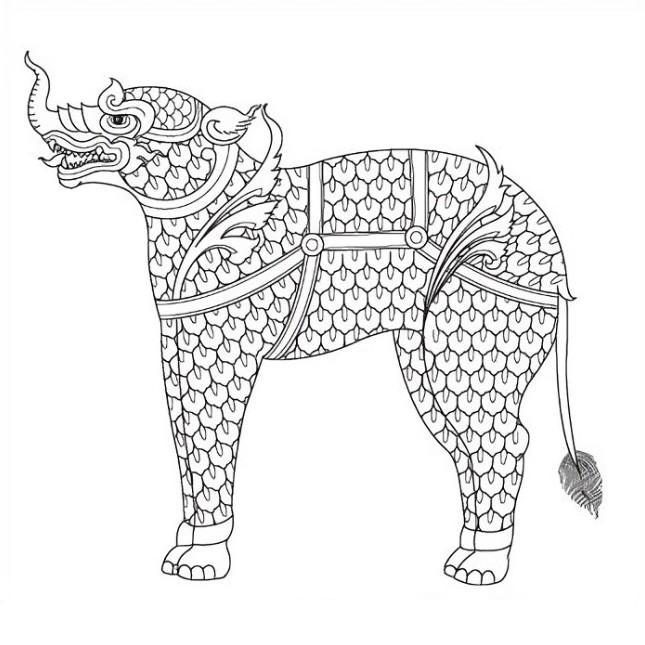
Ramad. The ramad is a himmapan creature derived from a real animal. In the old days, Thai artists did not know what a rhinoceros looked like, as they had never seen one until a baby rhinoceros was sent to King Rama V. Since then, the practice of drawing a ramad with a tapir-like snout has been abandoned.
Elephant
Elephants have played an essential role in the culture and history of Thailand. The animals once decorated the national flag and currency. Only ten years ago, Thailand still had 4000 elephants. Today, there are only 2500 elephants left. Elephants are now endangered. In the Himmapan world, there are a large number of creatures based on elephants. Most of these huge creatures are forest dwellers, one of which is worshipped by Hindus as the Elephant God, Erawan.
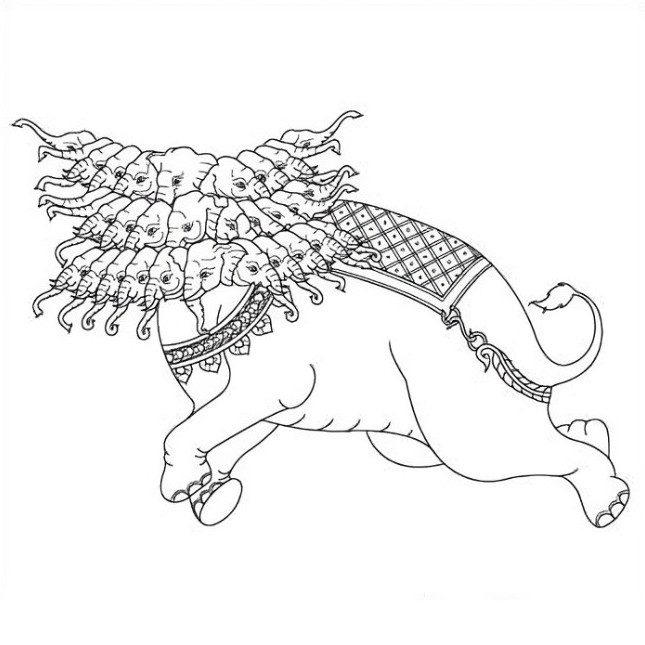
Erawan. The Erawan elephant is said to be the most powerful of all. It is described as a huge elephant with a silvery white body, with 33 heads, each with 7 long ivory tusks. Each of its tusks is 16 million meters long, so huge that it can house 7 large lotus ponds, in each tusk also live thousands of angels and their servants. It is quite rare to see the complete version of the elephant Erawan with 33 heads, instead, many artists prefer to draw Erawan as a 3 headed elephant.
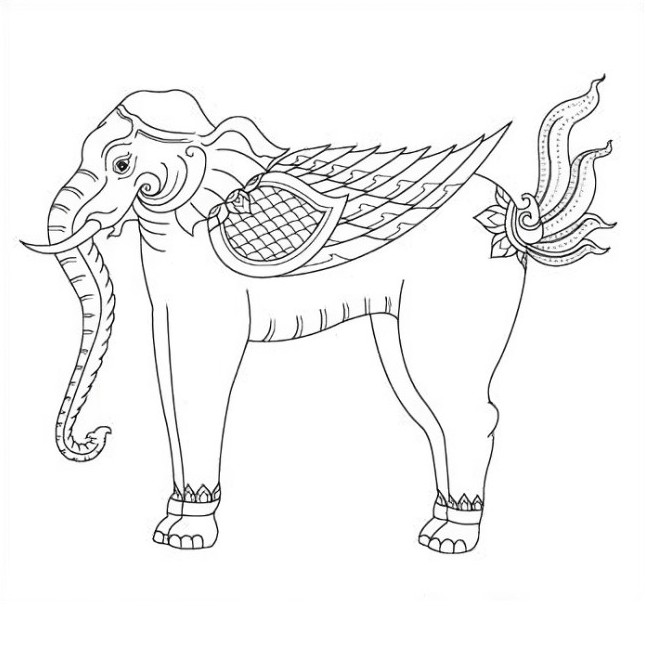
Karin Puksa. Karin Puksa (flying elephant) has the black body of a beautiful elephant with wings and a blood red tail of a bird. It can fly at high speed and distance. The trunk is used to grasp and lift objects, feed, drink, smell and make sounds. A wingspan twice as large as its body allows it to lift itself into the air. The tail, similar to that of a bird, is used to direct its flight path.
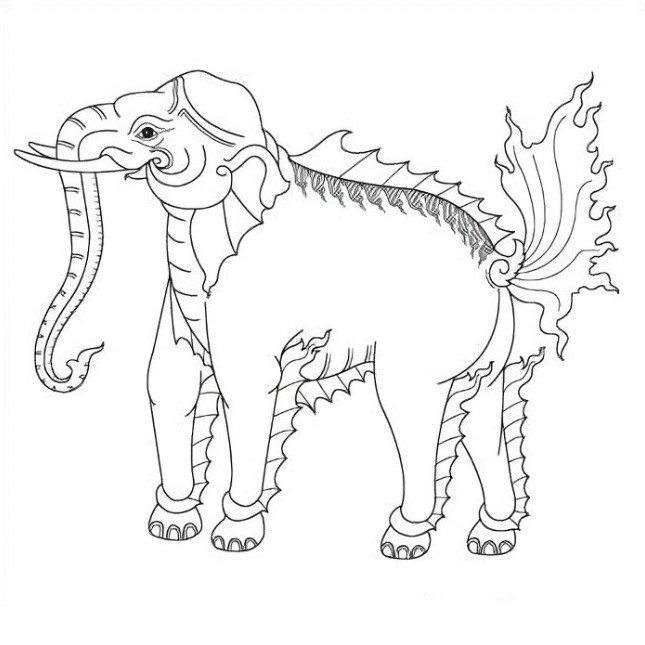
Waree Kunchorn. The Waree Kunchorn has the body of an elephant with some body parts from a fish (fins along the back bone, fish tail). It should not be confused with the Kunchorn Waree (reversal of words) which has only the two front legs of an elephant and the rest of the body with the characteristics of a fish. Both creatures live in the sea and can dive at high speed underwater.
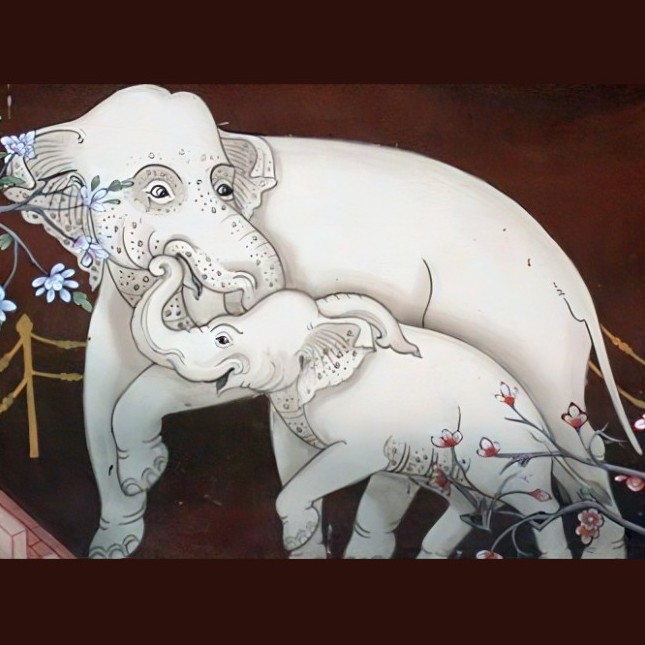
White Elephant. The white elephant is said to have a sacred power. For the kings of Burma and Siam (ancient Thailand), the possession of these sacred beasts was very important. It is said that the king who owns a white elephant will bring prosperity to his kingdom. If his white elephants died, it would spell disaster for the king and the kingdom. In Thailand, the white elephant was once the symbol of the national flag because it represents sanctity.
Cattle
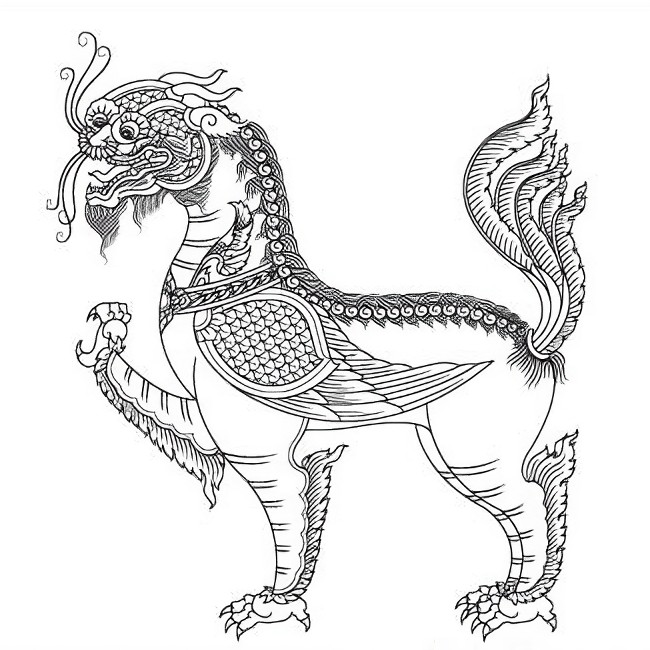
Mungkorn Vihok. The Mungkorn Vihok is a four-legged creature that combines the physical characteristics of a dragon, a bird and a cow. Its head resembles that of a dragon. Its bovine-like body is covered with a dark purple color and equipped with two wings and a bird-like tail.
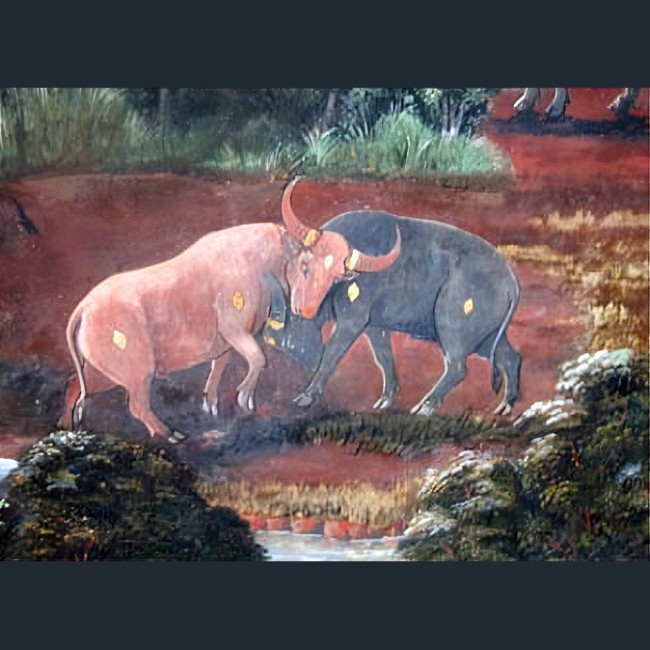
Torapee / Torapa. There was a giant named whose task was to guard the gates of Lord Shiva’s palace. This one disobeyed his order. The god was very angry and cursed the giant to be born as a buffalo named “Torapa” and to be killed by the hands of his own son named “Torapee”. Torapee compared the size of his hooves to his father’s every day. Until one day, when his hoof prints were about the same size, he would challenge and kill his father. In the Thai proverb, the word “Torapee” refers to those who are ungrateful to their parents.
Monkey
Monkeys are major characters and play important roles in the epic story of the Ramayana or Ramakien. Besides their appearances in the epic story, monkeys are also inhabitants of the Himmapan forest.
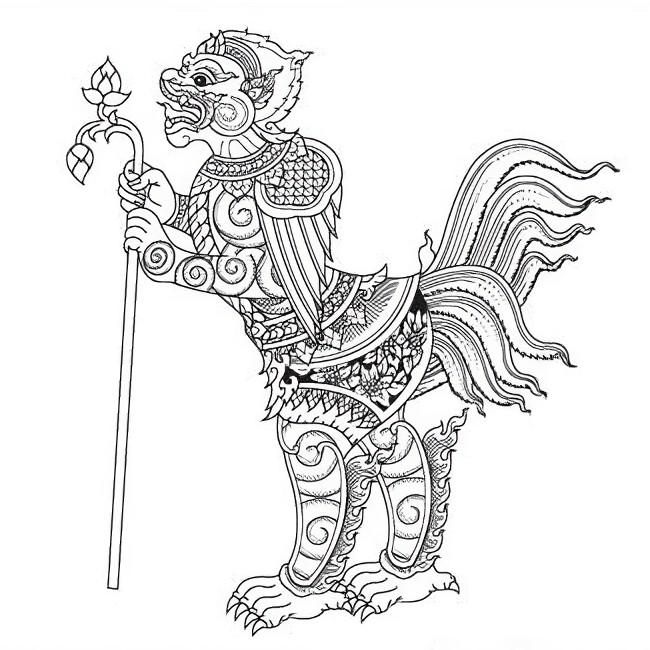
Gabil Puksa. Gabil Puksa is a half-bird, half-monkey creature. The creature is equipped with wings on the top of its shoulders.
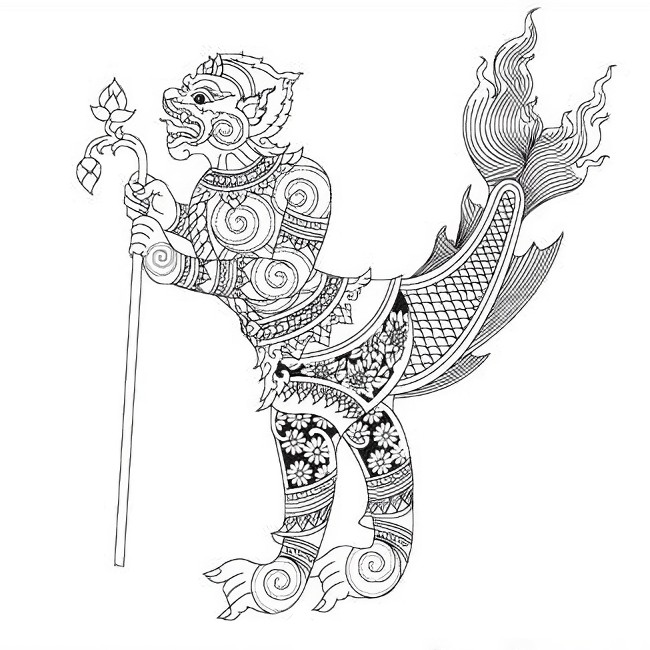
Mucha Nu. Mucha Nu is a mixed creature with the body of a monkey and a scaly fish tail. He is one of the heroes of the Ramayana epic. He is the son of the great ape, Hanuman, and the daughter of a giant, Suwanna Mucha. She has the upper body of a beautiful woman and the lower body of a fish, like a mermaid.
Dog
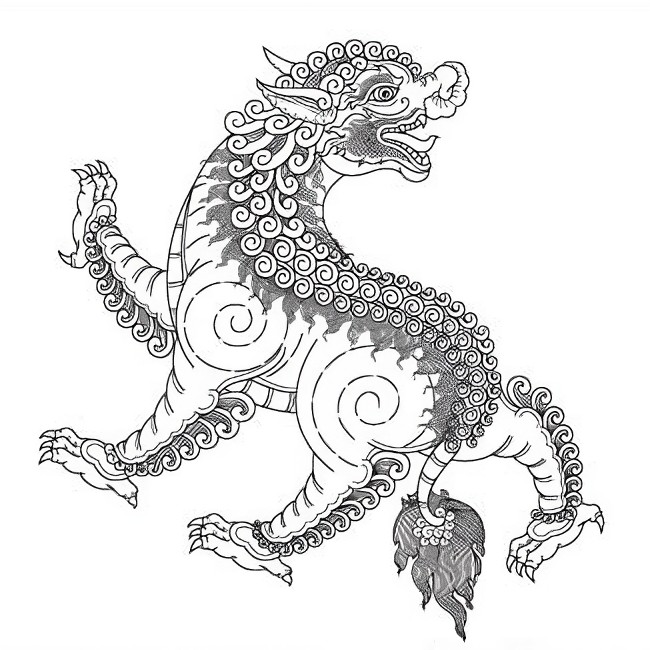
Khi Mee. In ancient paintings, the Khi Mee has a yellow dog-like body with thick fur on its neck and a bushy tail. However, there are many different types of Khi Mee and it is omnivorous and belongs to the canine group of animals. The Khi Mee has a keen sense of smell and strong legs designed for hunting. The Khi Mee feeds mainly on small animals (squirrels and rabbits).
Bird
There are about 28 different types of birds that roam the Himmapan land. Each has a unique physical appearance. Some birds are highly respected by Hindus, like Garuda, the king of birds. Others, like Thepp Puksee and Thep Kinnanorn, are considered holy spirits. In the epic story of the Ramayana (Ramakien), a number of birds play an important role, such as Sadayu who served and helped Prince Rama in the battle against the giant race.
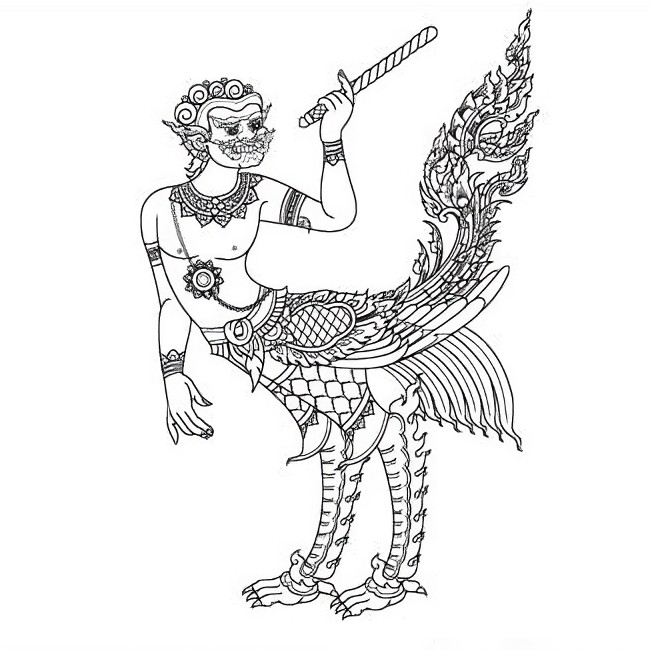
Asoon Puksa. It is a bird-based creature that has the upper body of a giant and the lower body of a bird. Some say his lower body is that of a rooster. It is believed to be carnivorous in nature due to its giant upper body characteristics. The creature is able to fly at high speeds and attack large animals such as deer, horses and even humans.
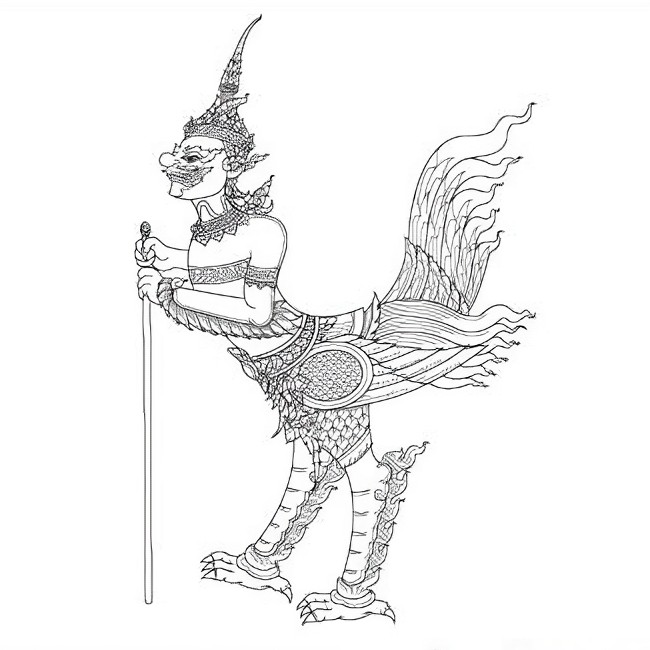
Asura Wayupuk. This creature has the characteristics of an eagle for its lower part. Asura Wayupuk appears in the tale of Ramayan (Ramakien). In this story, the beast is the son of a giant and a bird. The beast was also the governor of the city of Wichian, a giant city. Malicious in nature, the beast once spotted and kidnapped Prince Rama and his brother. Prince Rama’s loyal generals, Hanuman and Sukreep Eventaulyl, brought the princes back and killed Asura Wayupuk.
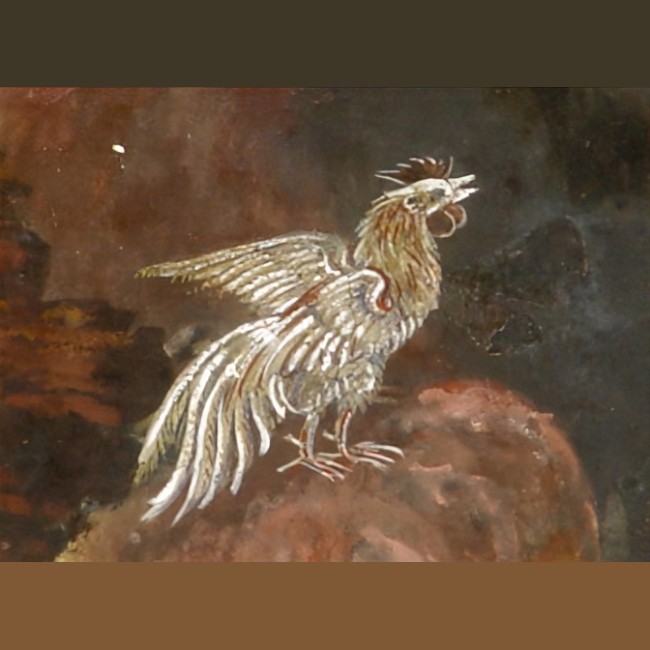
Gai. The chicken (or rooster) is one of the few creatures in the Himmapan world that does not usually mix with other creatures. There are a few kinds of roosters in the mythical forest: Gai Tang Kia, Gai Xe Chuan and Gai Hox Ian. From the sound of the names, the roosters probably have their roots in Chinese culture.
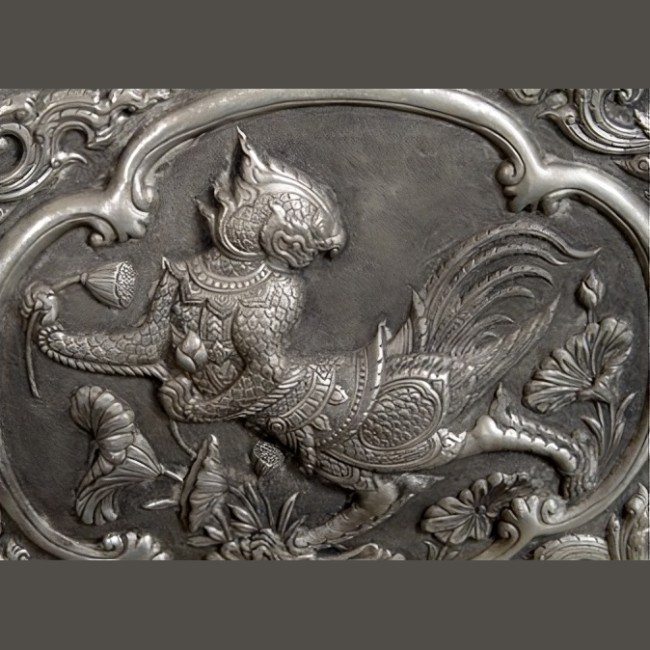
Nok Garawake. This animal is a magical bird that is said to have a heavenly voice. There are several variations of the name of this creature: Garawake, Garawik and Gorawik. It is said that the voice of Buddha is as beautiful as that of Nok Garawake.
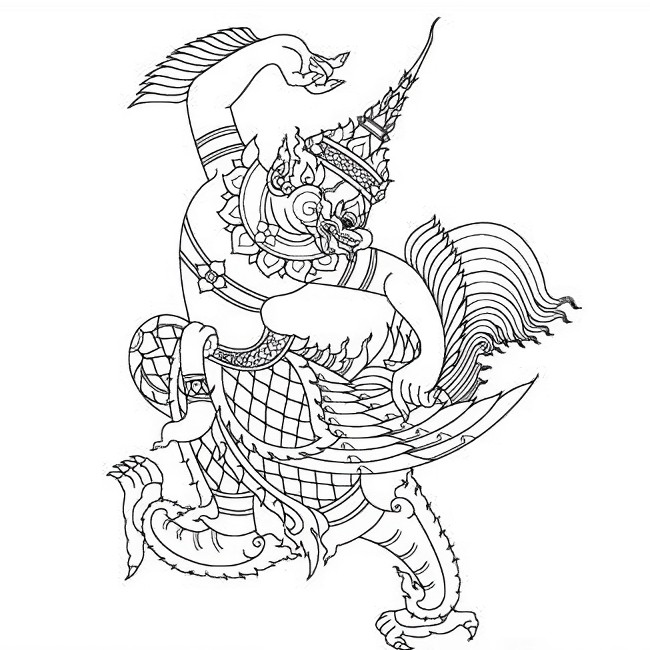
Garuda. Also called “Krut” (Thai: ครุฑ). Probably the most important creature in the Himmapan forest is the Garuda. Garuda is the king of birds, half man and half bird, the vehicle of Vishnu, a Hindu god. Descriptions of Garuda vary from legend to legend. He is usually depicted as having the head, beak, wings and talons of an eagle. With the torso like that of a human. His face is white, his wings red and his body golden and shiny.
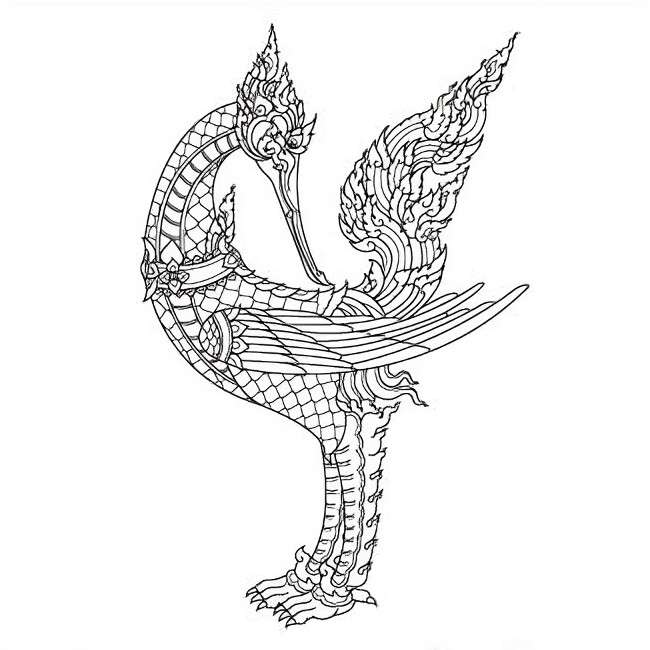
Hongsa. Although there are many appearances of Hongsa in Thai architecture, little is known about its origin. According to ancient murals, pictures and sculptures, Hongsa shares the same characteristics as a swan. In the Hindu religion, Hongsa is also the vehicle of Lord Brahma.
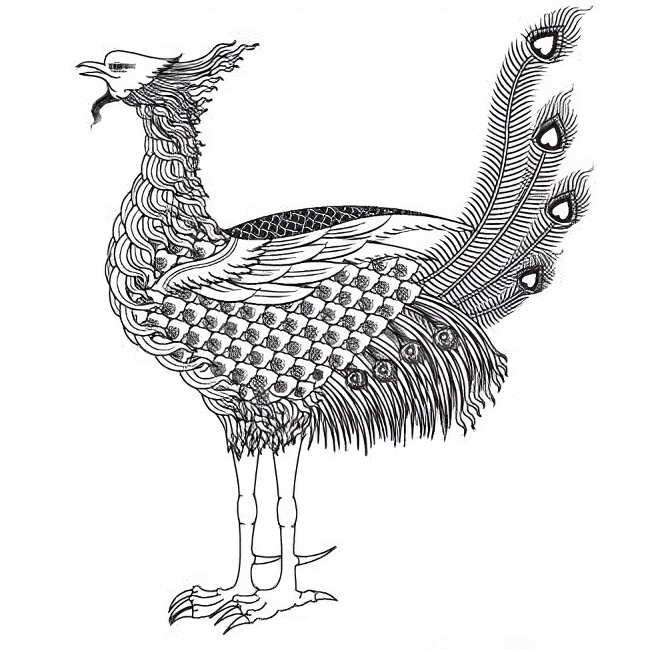
Hong Jean. A Hong Jean is very different from its Thai cousin. It does not look like a swan at all. In fact, it is more like a peacock. The creature has multi-colored feathers, including red, yellow, blue, black and white. Each color represents a different meaning. The general meaning is virtue, beauty, wit, honesty and politeness. This creature also represents longevity and good luck.
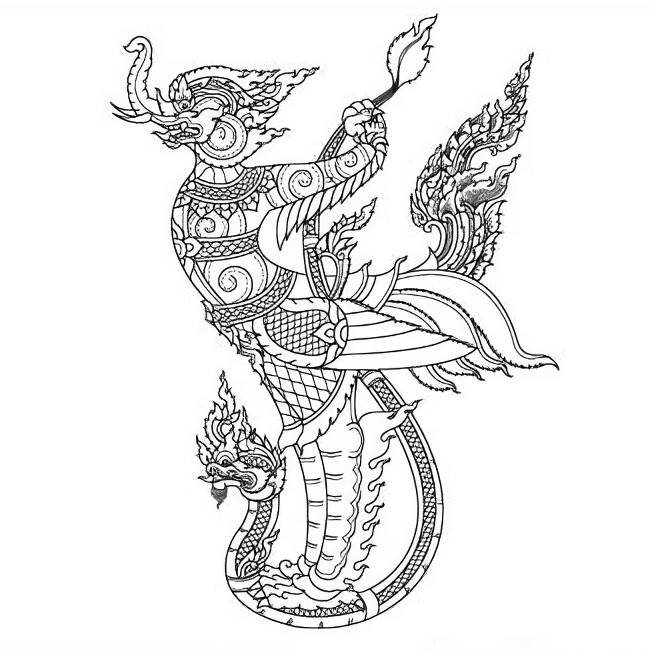
Kocha Puksa. Kocha Puksa is a bird-based creature with many parts of other animals. Kocha Puksa has a white body with the head of an elephant, the lower body of a swan or Hongsa, and the torso and arms of a Garuda.
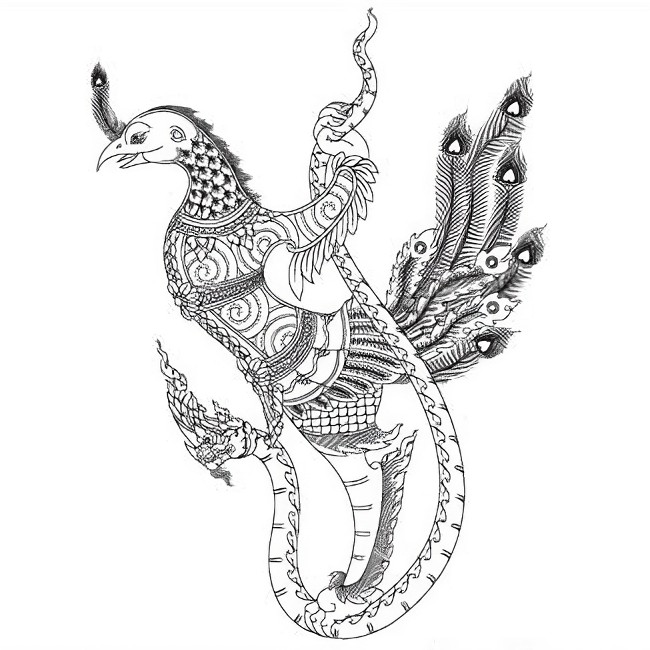
Mayura Wane Tai. Mayura Wane Tai is a mixed creature with features of a peacock and a Garuda.
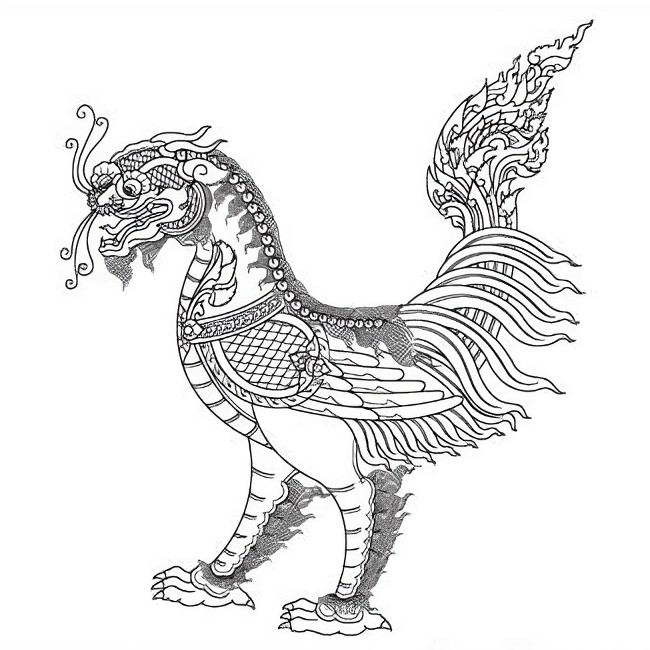
Mungkorn Sagunee. Mungkorn Sagunee is a mixed creature with the head of a dragon and the body of a bird.
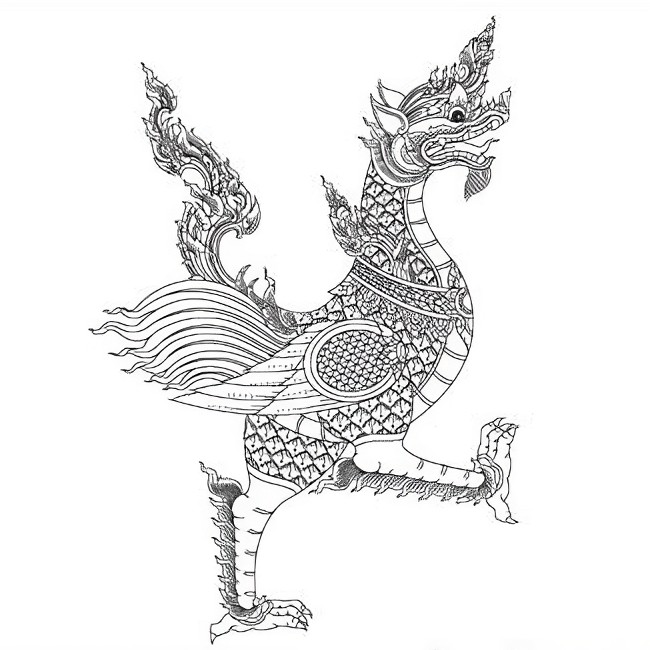
Nak Puksin. Nak Puksin is a mixed creature between a Naga and a Hongsa. Although the name of the creature is similar to another Himmapan creature, Nak Puksee, the two are totally different. Nak Puksin is red in color with the head of a Naga and the body of a Hongsa.
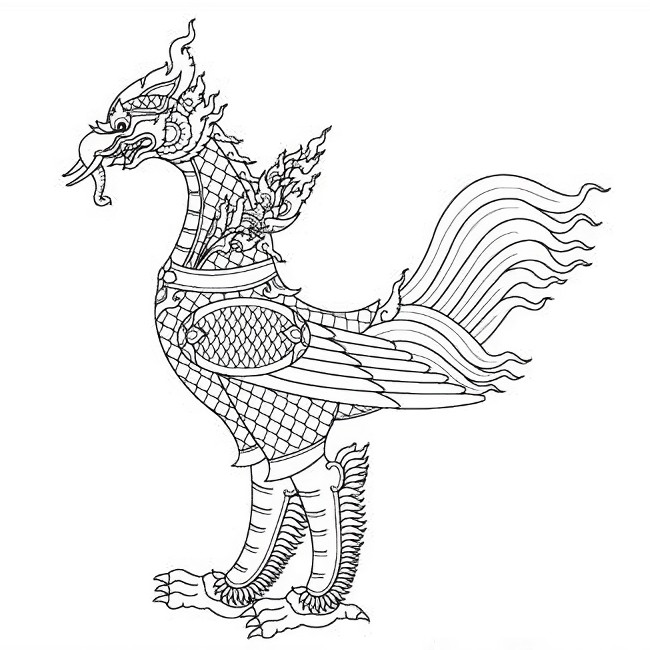
Nok Hussadee. (Thai: นกหัสดีลิงค์). Nok Hussadee is a large bird with the head of an elephant. It is also described as the creature of immense size and power in many tales.
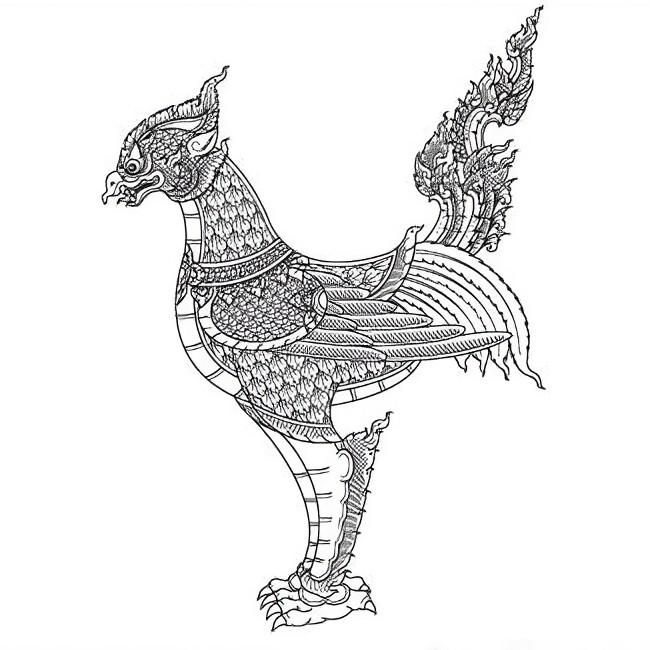
Nok Insee. Nok Insee (or Eagle) is a medium sized bird that really exists in the real world. In the world of Himmapan, however, the creature is a little different. Nok Insee is light green in color with brown wings and a tail like Singh’s.
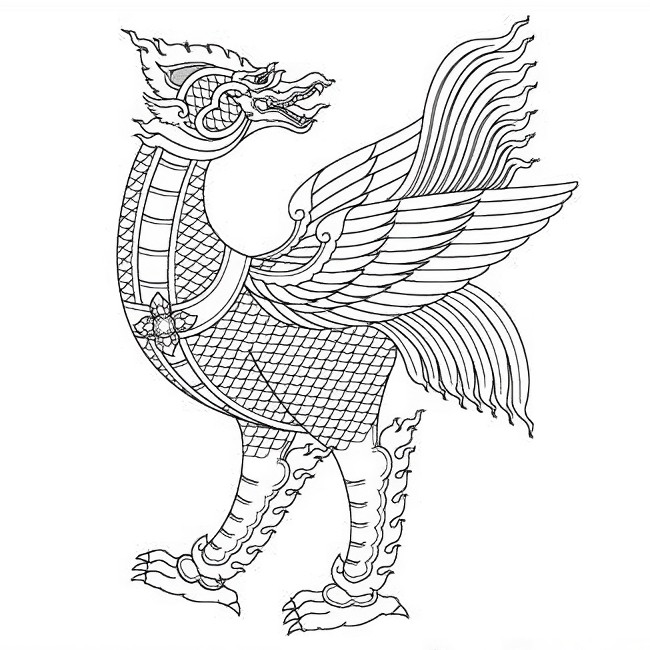
Nok Thet. The name “Nok Thet” is perhaps a shortening of “Nok Kra Jok Thet” which means ostrich. The bird is described as having a red colored body with tail feathers like a rooster. Some believe that the bird was invented by the imagination of an artist.
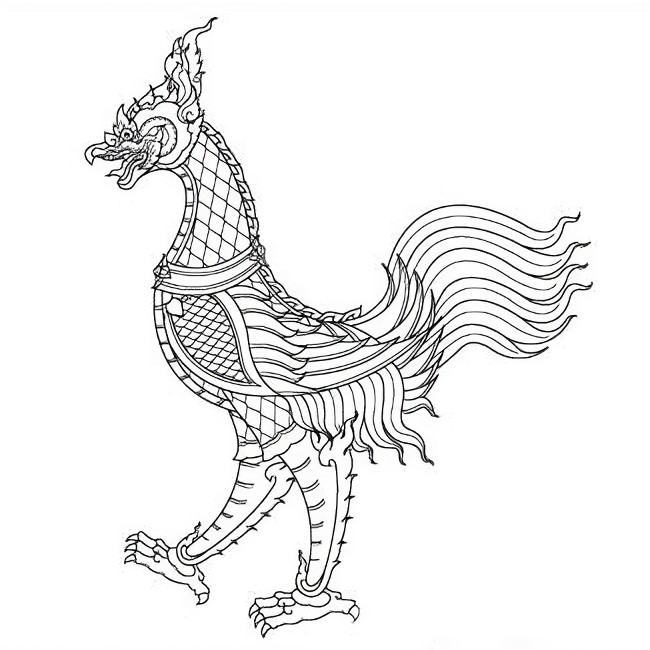
Nok Sadayu. Sadayu is a great bird in the epic story of the Ramayana (Ramakien). He is the son of Garuda and the brother of another great bird, Nok Sumpatee. The bird plays an important role in the story because it is a great ally of the Ayutthaya kingdom and Prince Rama.
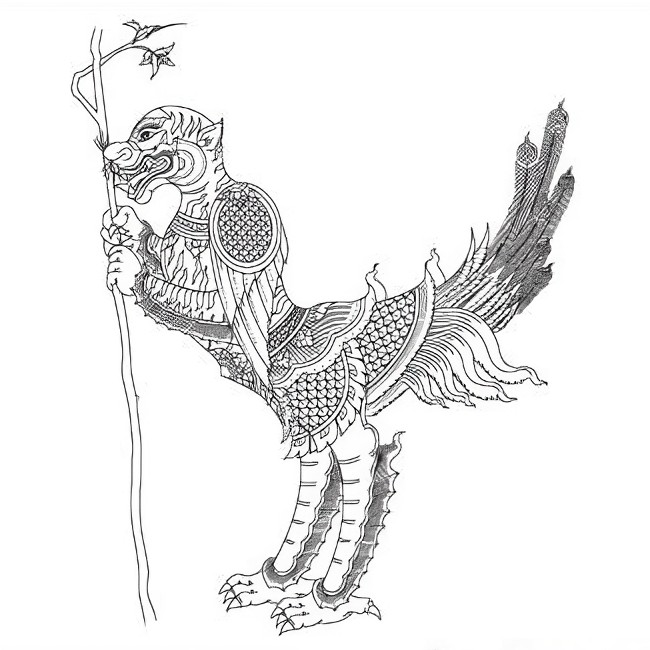
Suea Peek. Suea Peek is a mixed creature with the head of a tiger and the body of a bird. In the ancient texts, the creature is yellow in color. The creature is similar to Payak Wane Tai.
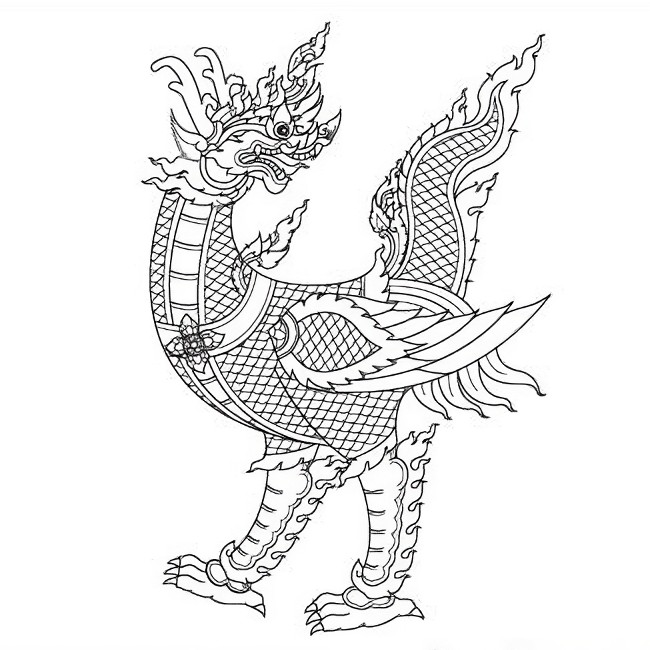
Sagoon Hayra. The Sagoon Hayra is a creature with mixed characteristics between a Hayra (or Naga) and a bird. Artists sometimes describe the head of the Sagoon Hayra as a Hayra or Naga with two antlers.
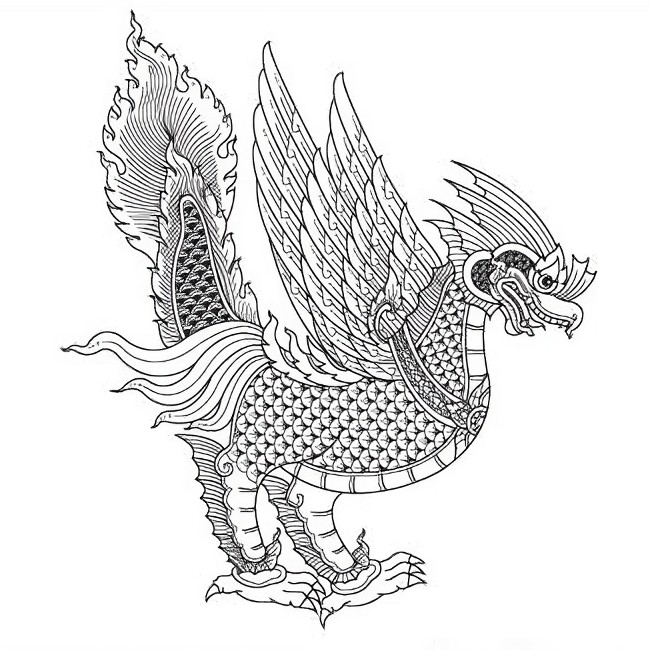
Sintu Puksee. Sintu Puksee is a very strange creature because it has both bird and fish characteristics. The creature has a blue bird body with a fish tail and fins.
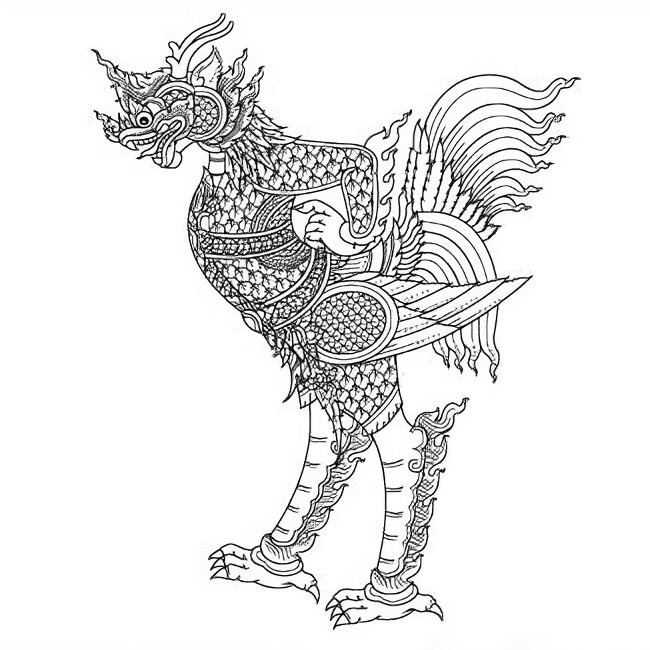
Subun Hayra. Subun Hayra has the head of a two-horned Naga and the body of a Garuda. A rather strange combination since these two creatures are sworn enemies.
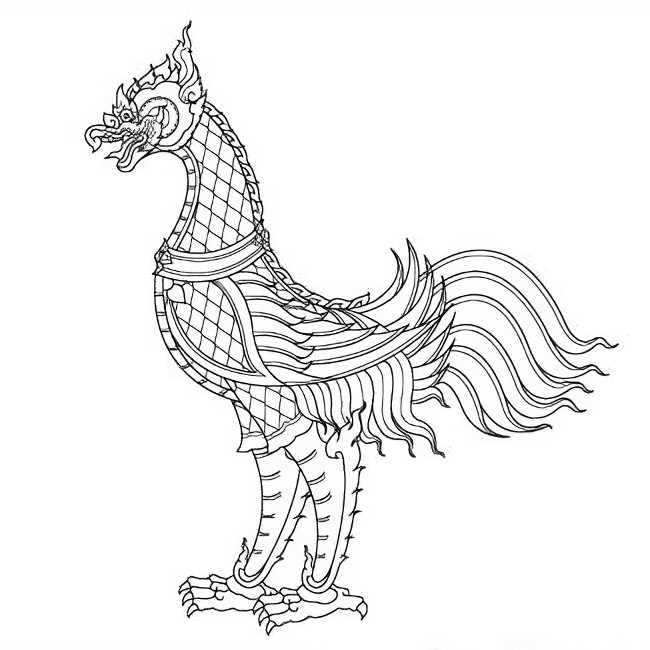
Nok Sumpatee. Sumpatee is the son of Garuda and the elder brother of Nok Sadayu. His physical appearance is similar to Sadayu’s, but his color is red instead of green. Sumpatee is the bird of altruism because of his courageous act.
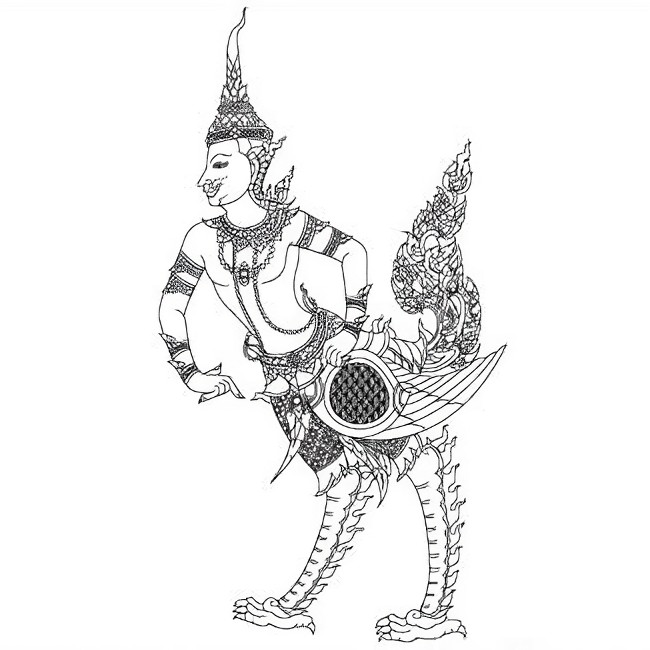
Thep Kinna Norn. (Thai: กินนร). Thep Kinnanorn (or Kinnanorn) is the male counterpart of Thep Kinnaree. The creature has the upper body of a human and the lower body of a Hongsa.
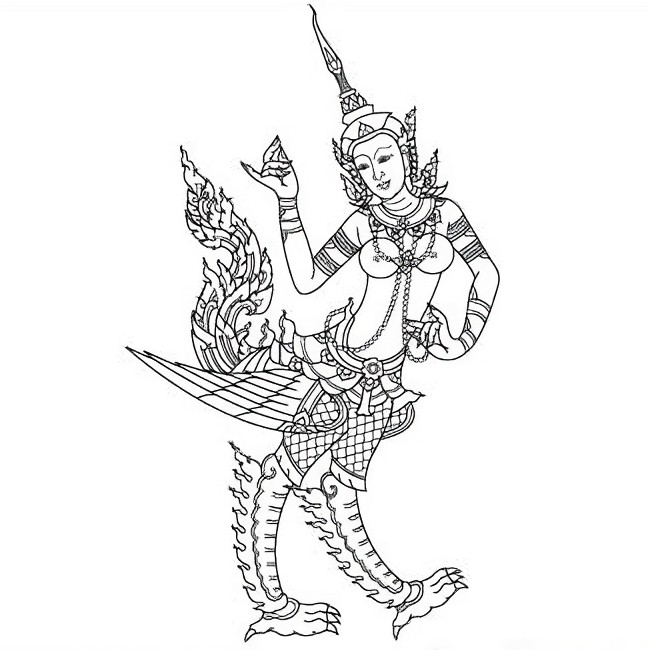
Thep Kinnaree. (Thai: กินรี). Thep Kinnaree is one of the most beautiful beings in the Himmapan. Described as a beautiful half-woman, half-swan creature, with the head and torso of a woman, but underneath the delicately tapered waist, she has the body, tail and legs of a swan. Kinnaree also has human arms and the wings of a swan. The Kinnaree has a male counterpart (the Kinnara or Kinna Norn) and is similar in form. The Kinnaree is often depicted in sculptures, traditional architecture and temple murals.
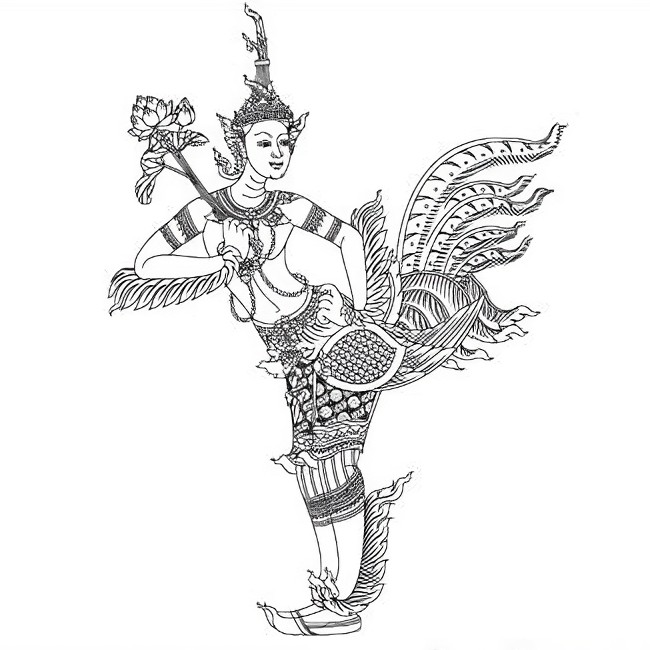
Thep Puksee. Thep Puksee is a mixed creature between a human and a bird. What differentiates this creature from Thep Kinna Norn and Thep Kinnaree are its human-like legs.
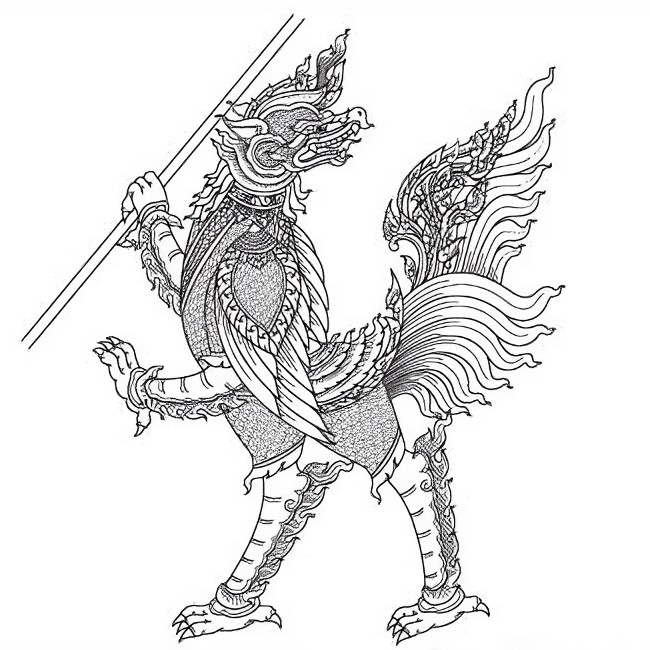
Nok Tuntima. (Thai: นกทัณฑิมา). Nok Tuntima is an inhabitant of the Himmapan forest. This creature is always equipped with a long pole. In some legends, this bird has the face of a human.
Other variants include the Mayura Khon Tun (it has the characteristics of both a Khon Tun and a Peacok), the Nak Puksee (a creature that is a mix between a human-based Naga and a bird), the Payak Wane Tai (a creature that is a mix between a tiger, a Garuda and a Hongsa), and the Sriha Subun (which has the head of a Singh, the body of a Garuda, and the tail of a Hongsa).
Fish
Most sea creatures in the Himmapan world are a combination of a land animal and a fish. Perhaps because in ancient times, people associated water with fish. Therefore, anything that is able to swim has a fish tail.
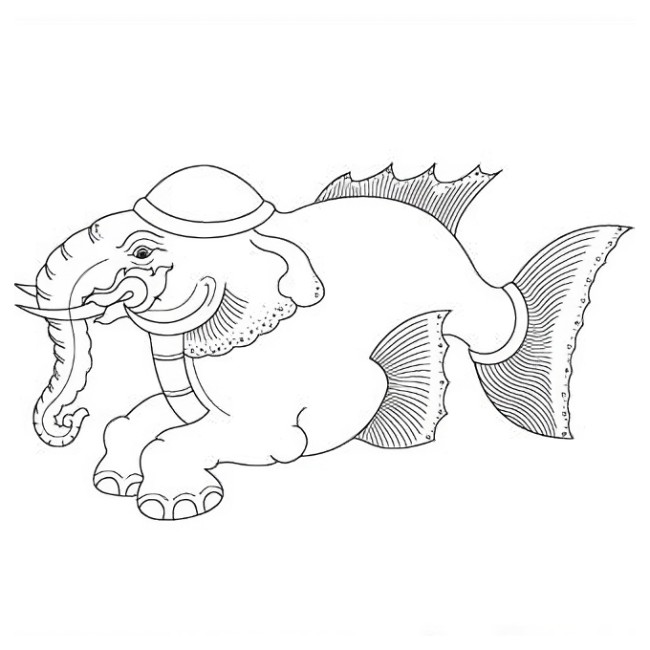
Kunchorn Waree. (Thai: กุญชรวารี) Kunchorn Waree is a sea creature that combines the characteristics of an elephant and a fish. The creature has only an elephant’s head, 2 front legs of an elephant and the body of a fish, the creature is able to swim quickly underwater. This creature is often confused with another elephant-fish creature, Waree Kunchorn, which has the whole body of an elephant with gills and fins of a fish.
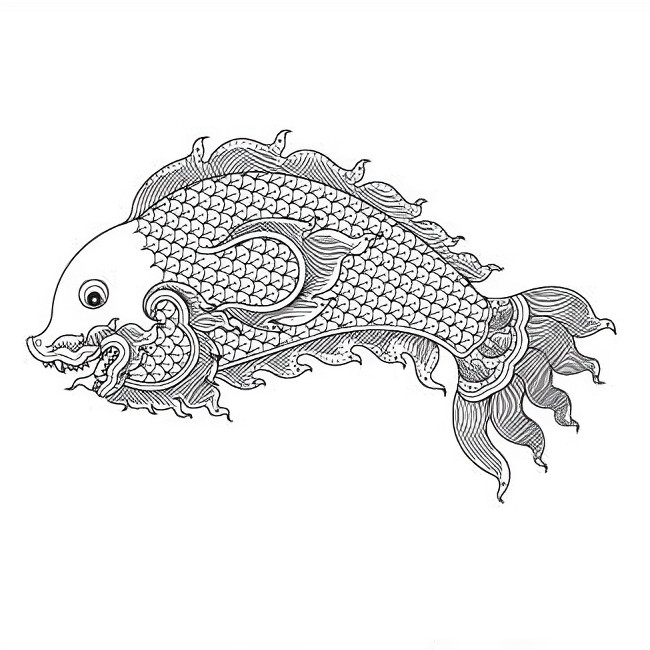
Mucha Wan. Its name which derives from 2 words; “Mucha” which means fish and “Wan” which means big. In fact, this Himmapan creature is based on a colossus-sized marine mammal, the seal. In most representations by ancient artists, they depict them as fish-like creatures with sharp, pointed teeth.
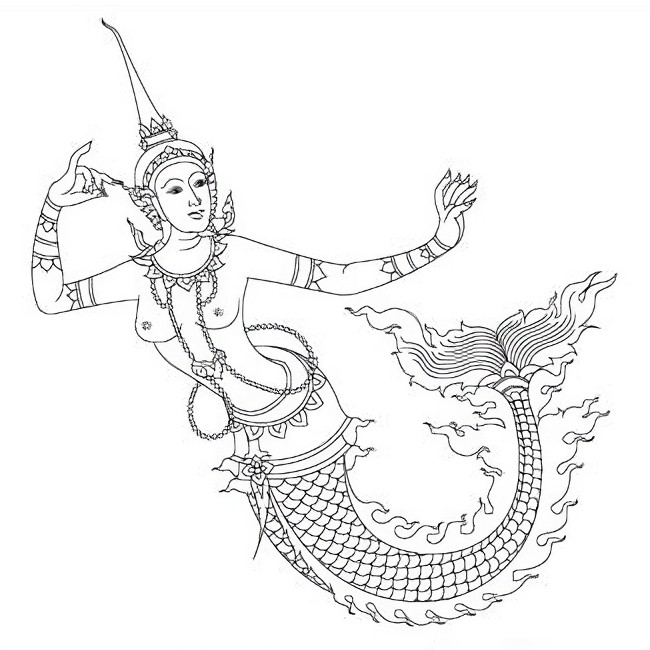
Nang Ng-uek. (Thai: เงือก). Nang Ng-uek (or mermaid) is a sea creature that is mentioned in almost every culture. Throughout the world, the creature is described as a beautiful young girl with the lower body of a fish.
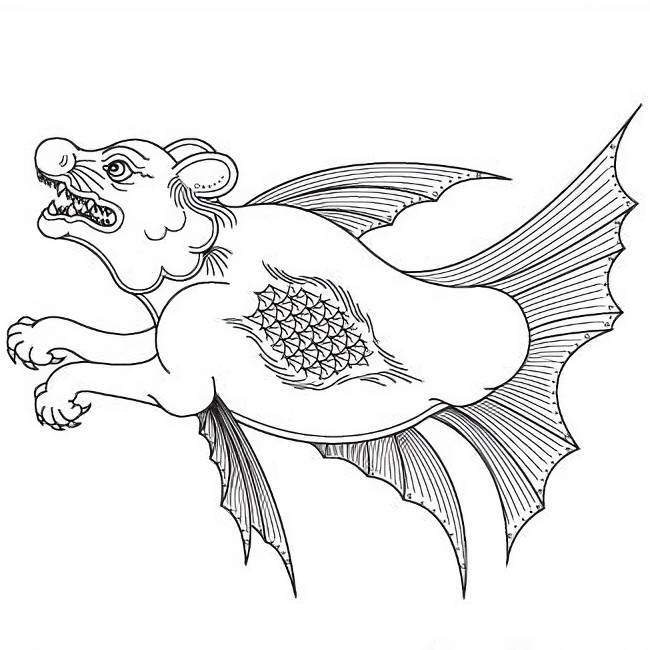
Pla Seua. Its name is derived from 2 words: “Pla”, a common word in Thai which means fish and “Seua” which means tiger. The creature has the head of a tiger and the body of a fish.
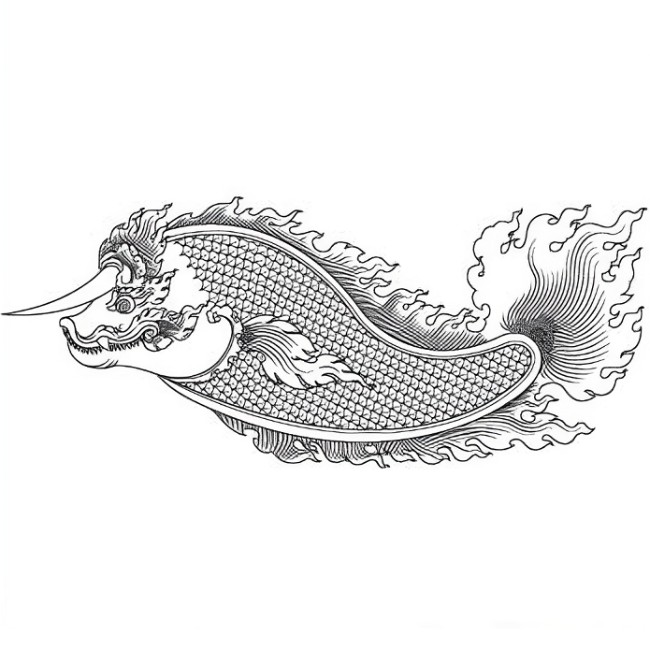
Saringka Mussaya. Saringka Mussaya is a magical fish that was an incarnation of Lord Vishnu. The main task of this fish was to help drag a boat when the world was flooded. It is said that the fish has a single horn growing on its forehead.
The classification of fish also includes the Hema Warin (marine creature of the Himmapan world that has the combined characteristics of a Hem and a fish), the Mucha Naga (creature with the head of a Naga, with the body and tail of a fish), the Pla Kwai (creature with the head of a buffalo and the body of a fish).
Crocodile
Some say that Naga and Dragon come from the same root, the crocodile. In some Chinese representations of dragons, the artists drew the faces like those of crocodiles. Only the more recent Chinese dragons have more of the characteristics of a lion for the head of a dragon. In Thai literature, crocodiles have more than physical powers, they are able to transform into human beings and have many other magical powers.
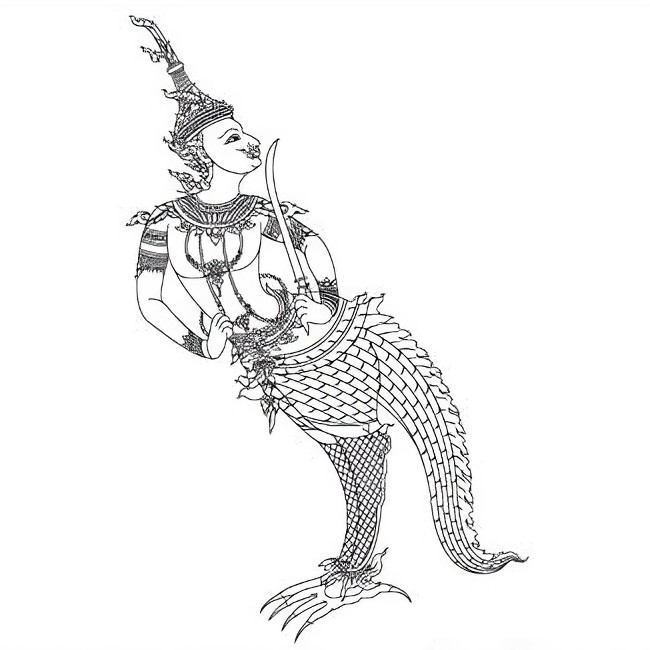
Gumpee Nimitr. Gumpee Nimitr is a mixed creature between an angel and a crocodile. The upper body has the characteristics of an angel, and the characteristics of a crocodile from the hips down.
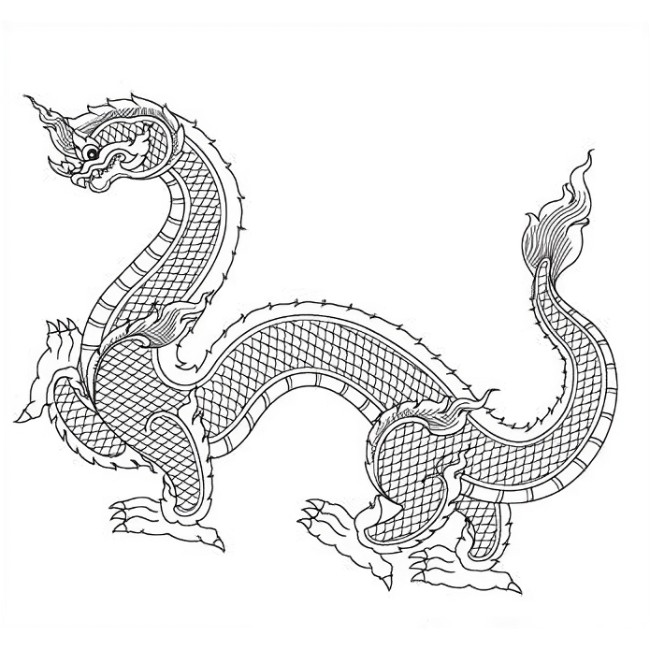
Hayra. The Hayra (or Hayra Pod) is a Himmapan creature mentioned in an ancient Ayutthaya text. The Thai dictionary describes a Hayra as a crocodile-like creature with some characteristics of a Naga. This creature is amphibious and carnivorous.
Crab
Legend has it that Buddha was born in the form of a large elephant living in the Himmapan forest, near a pond that was inhabited by a giant crab. This crab killed and ate the elephants that came to bathe. The big elephant finally defeated the crab and only the two big claws remained. One of them was sent to a king who made a long drum out of it. The other was picked up by the race of giants who used it to create a large war drum.
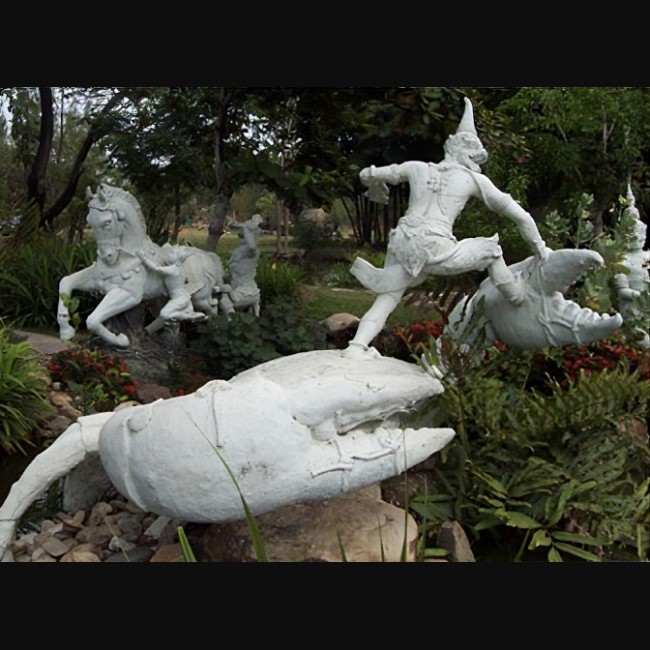
Giant crab. Because of its already strange characteristics (hard shell, large claws and multiple legs), the creature is often not modified from its actual physical form. In fact, in most legends, they are simply larger.
Naga
The Naga, or king of snakes, is a snake-like creature with a beard and a pointed crown. In ancient texts, Naga is the half-brother of Garuda. According to mythology, the two had the same father and their mothers were sisters. The Nagas are the sworn enemies of Garuda because of the conflict between their mothers.
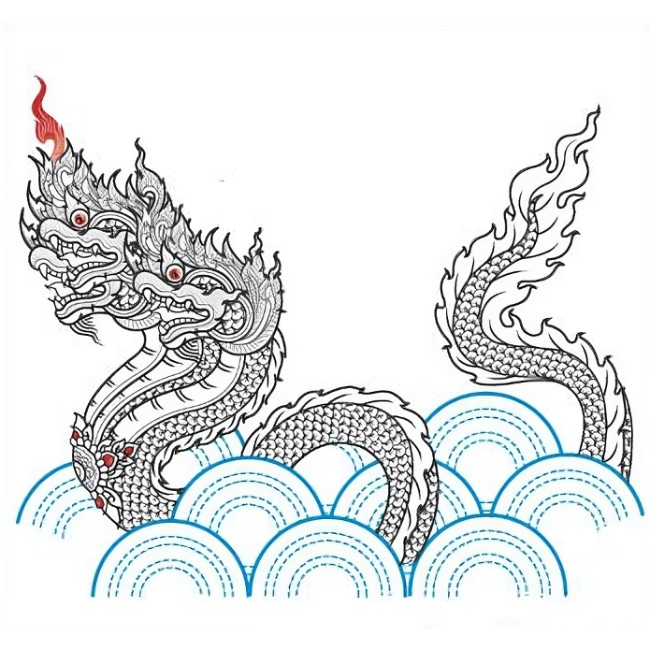
Naga. Also called Phaya Nak (Thai: พญานาค). The Naga is often featured in Thai architecture and is frequently depicted giving comfort and shade to the meditating Buddha, with the coils of the large snake acting as a cushion while the many heads act as an umbrella.
Human
There are many Himmapan creatures that have human traits but also traits of other types of animals such as the Kinnaree, the Upsorn Sriha and many others. The creatures below do not contain any traces of other animals except for human traits.
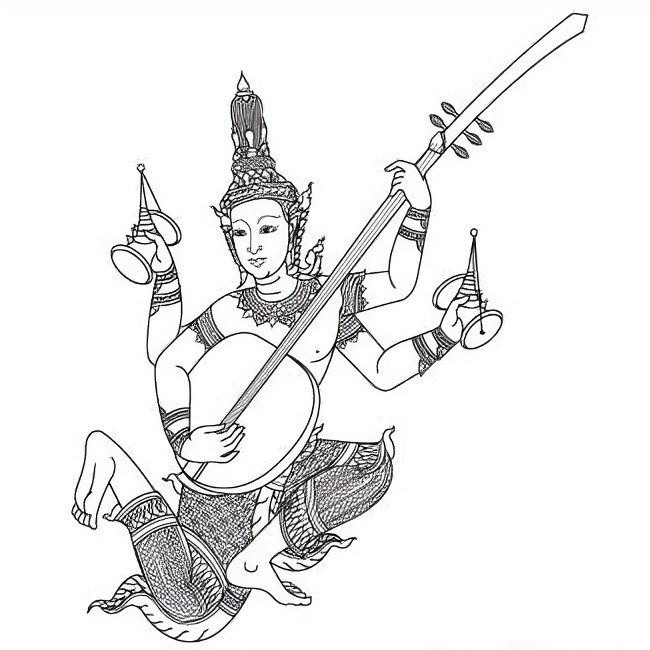
Khon Tun. Khon Tun is a magical being who lives between the human world and the sky, in the Himmapan forest. These creatures are associated with music and are very fond of all kinds of musical instruments. There are many places in ancient texts and literature that mention Khon Tun.
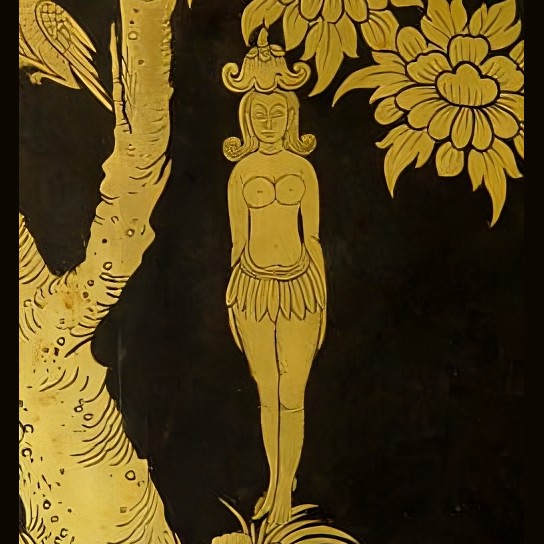
Makalee Pon. The Makalee Pons are strange female beings who are born from magical trees that exist only in the Himmapan forest. The strange tree produces fruit, and the Makalee Pons emerge from the fruit once it is ripe. In ancient Thai texts, the Makalee Pons become wives of hermits.
To know more about this ...
For beginners who want to learn about the mytic creatures in Thailand, the city of Bangkok is the ideal setting to enrich your knowledge on this subject. You can get a lot of information about the magical animals of the Himmapan forest in many temples and museums in the capital. Here is a non-exhaustive list of these places :
- Wat Phra Kaeo and the Grand Palace
- Wat Arun (The Temple of Dawn)
- Wat Po
- Wat Benchamabopit
- The National Museum
- Ancient City (Muang Boran)
- Erawan Museum
